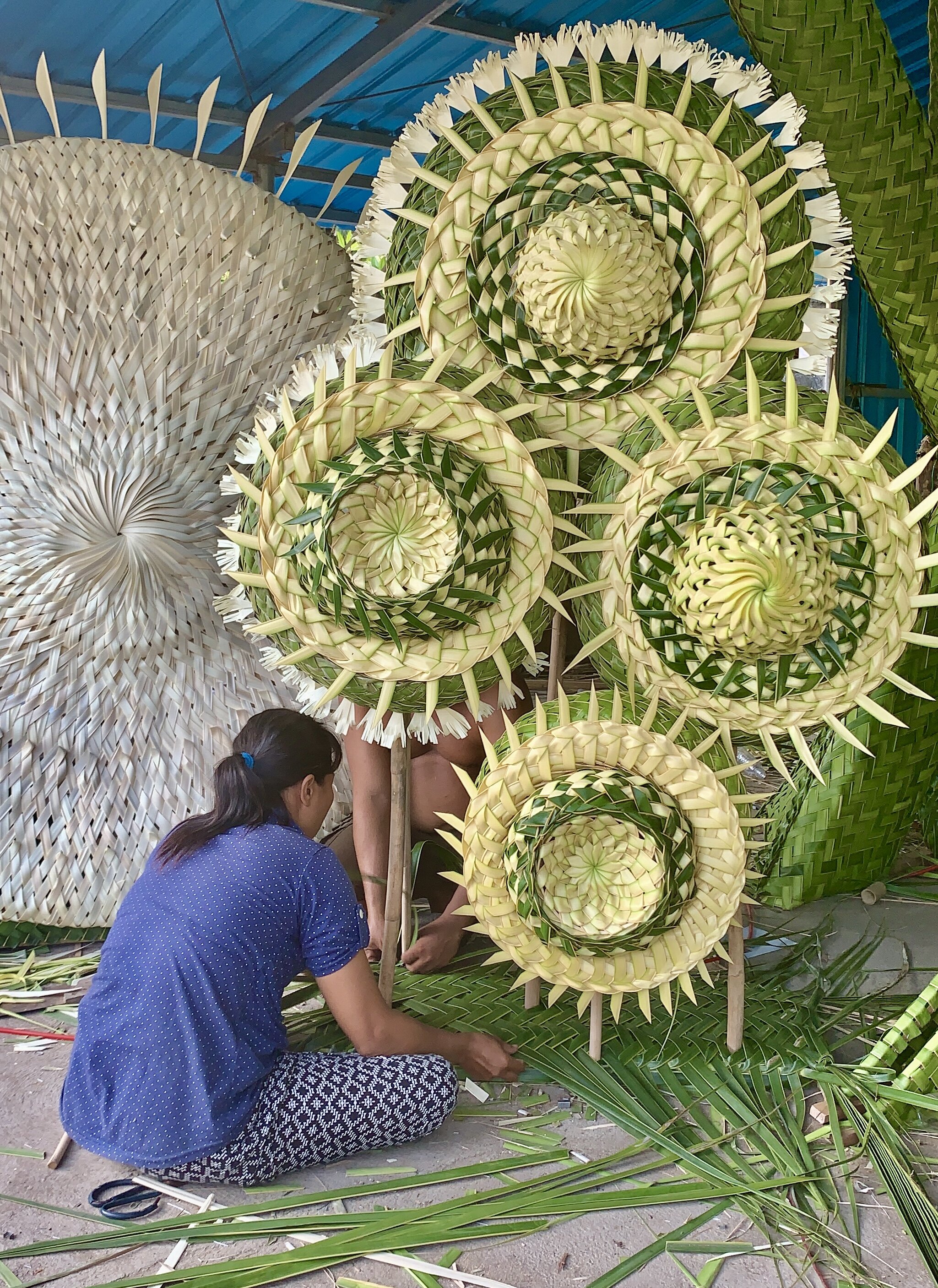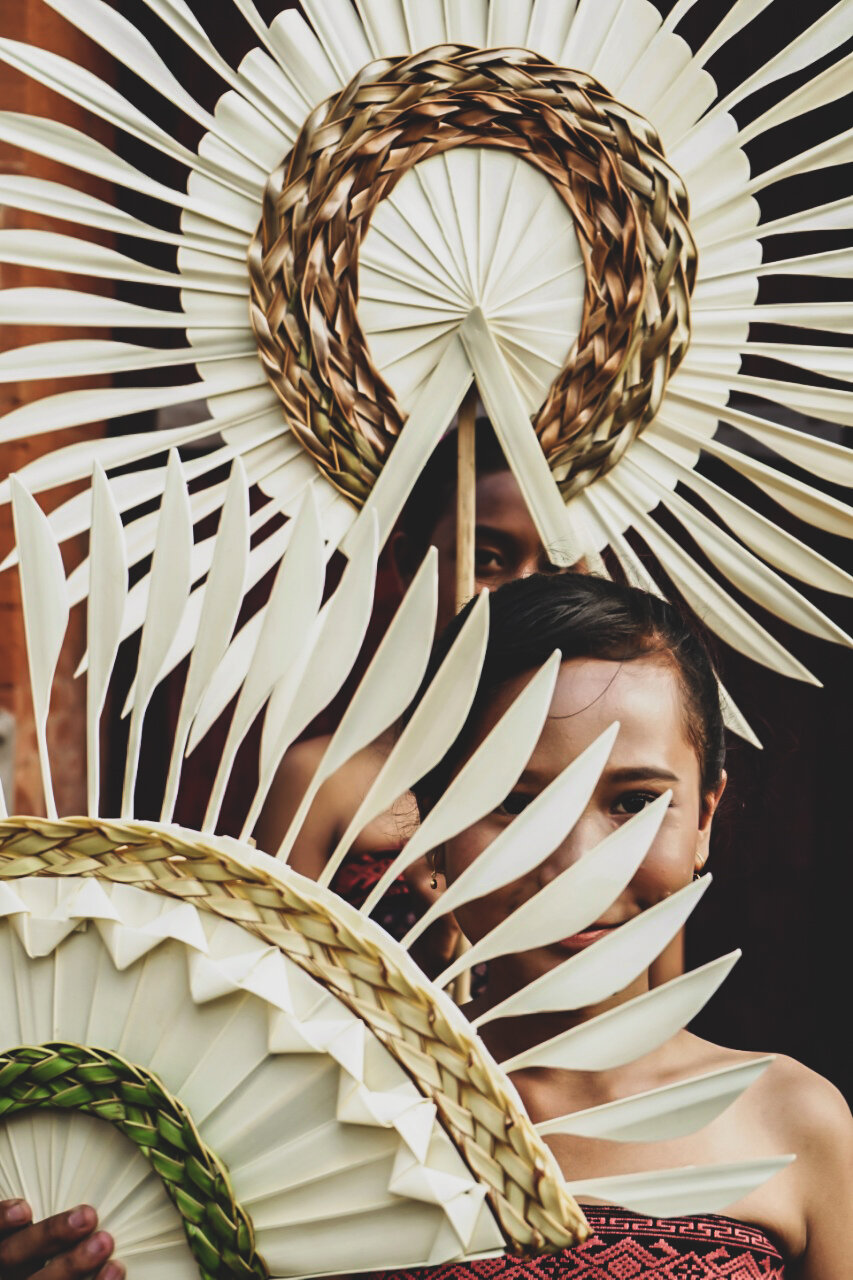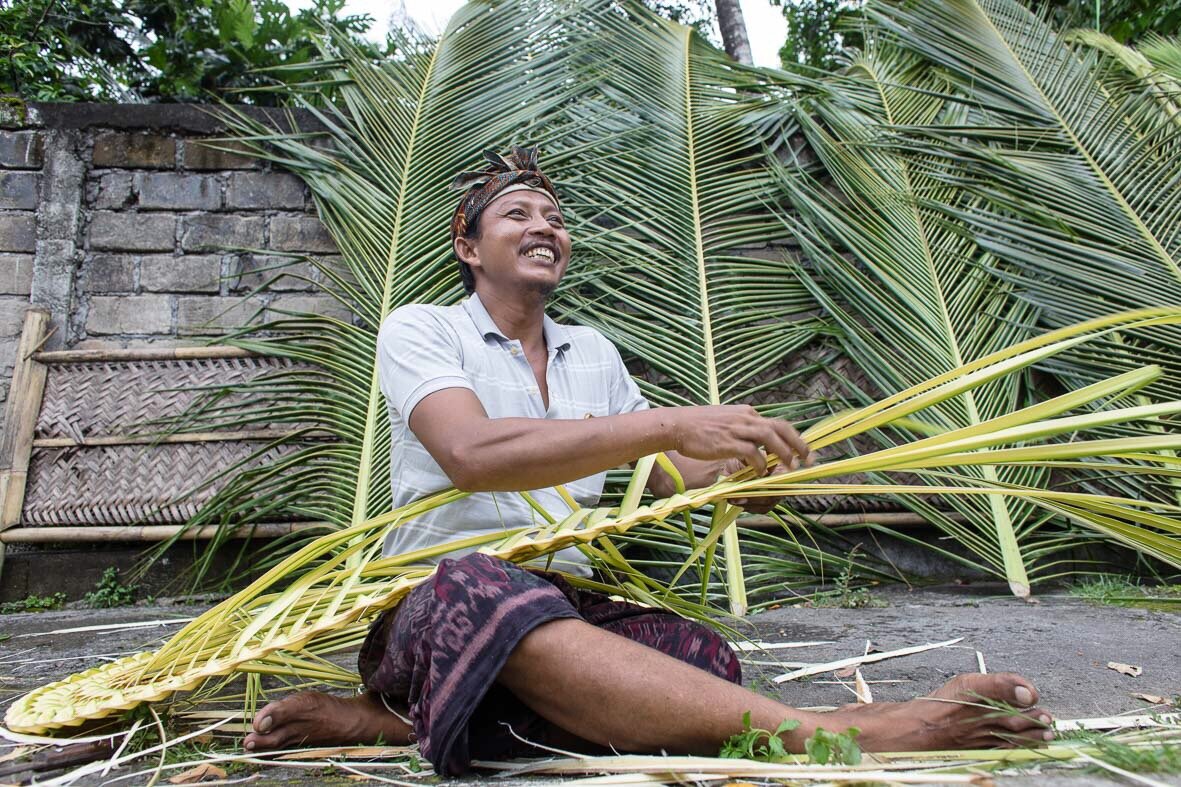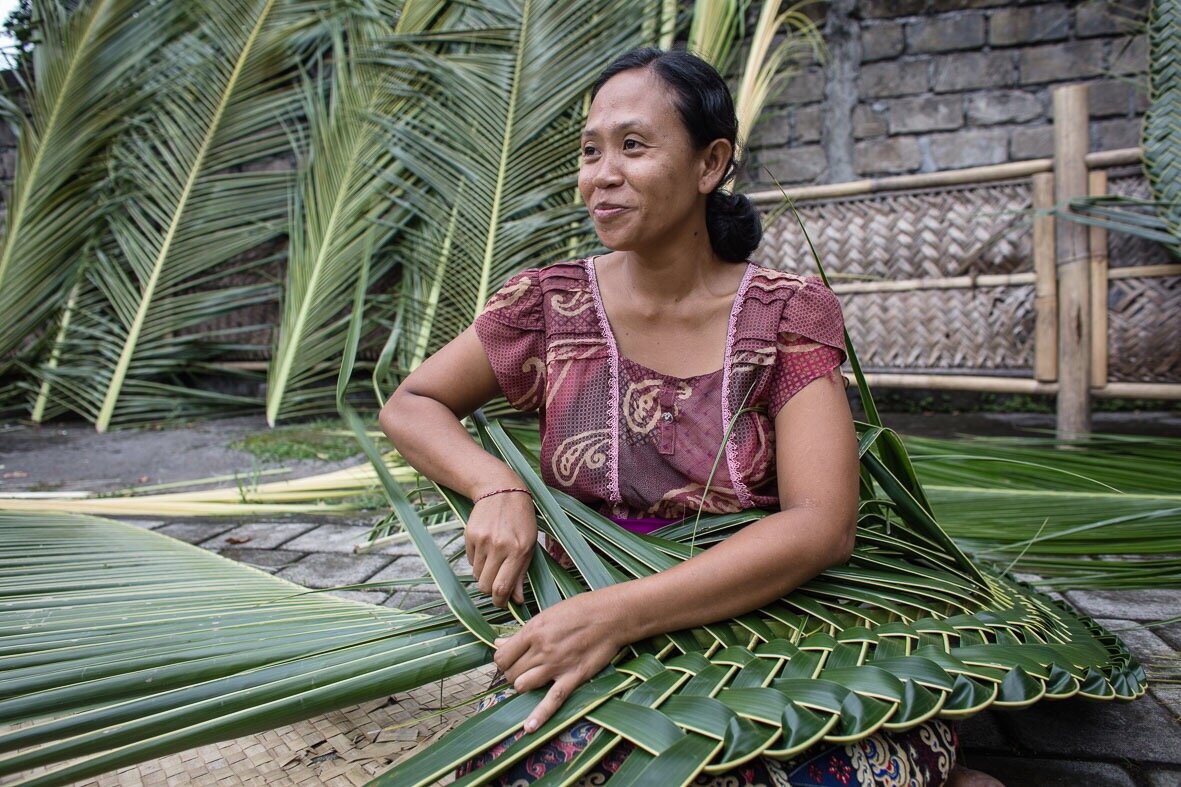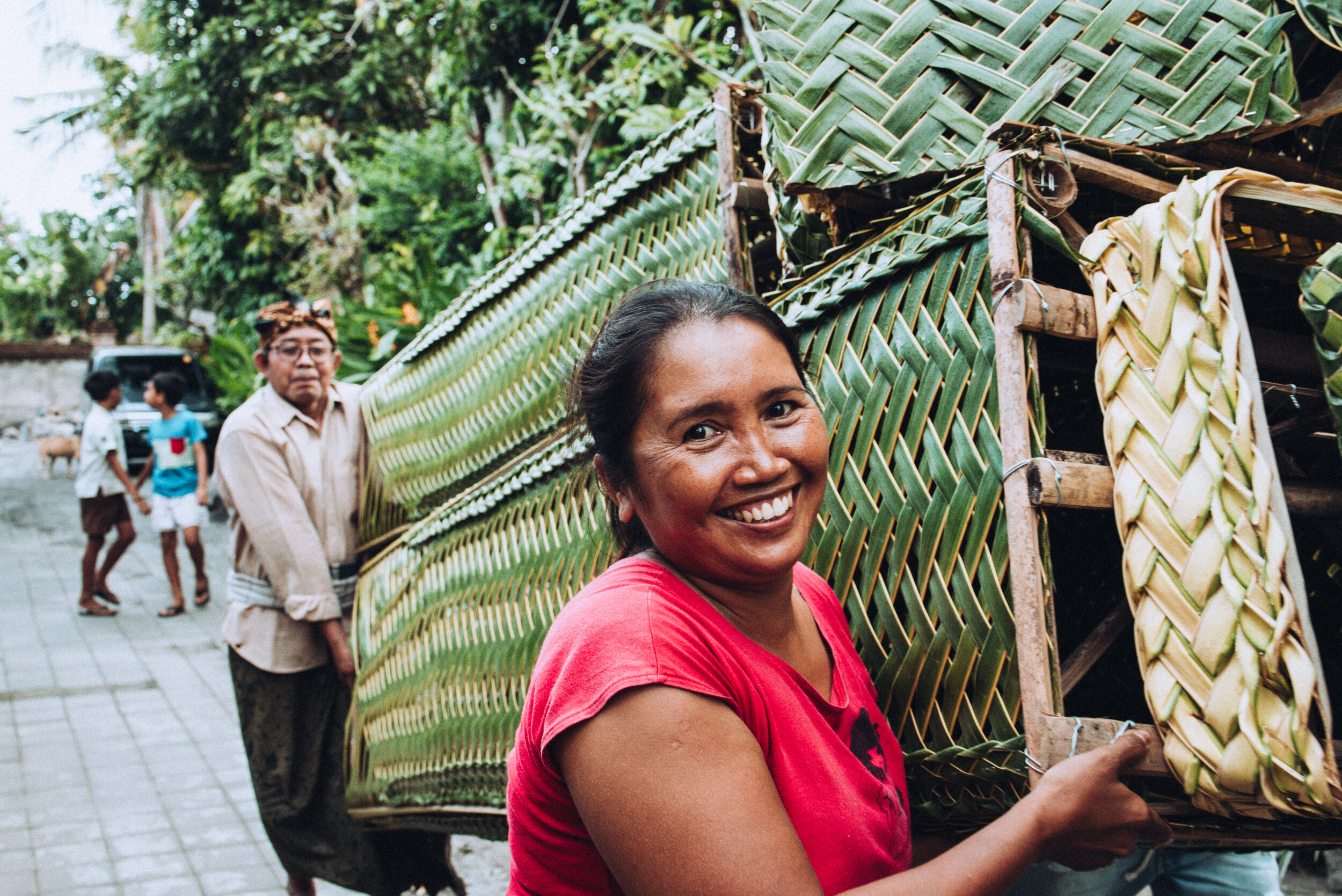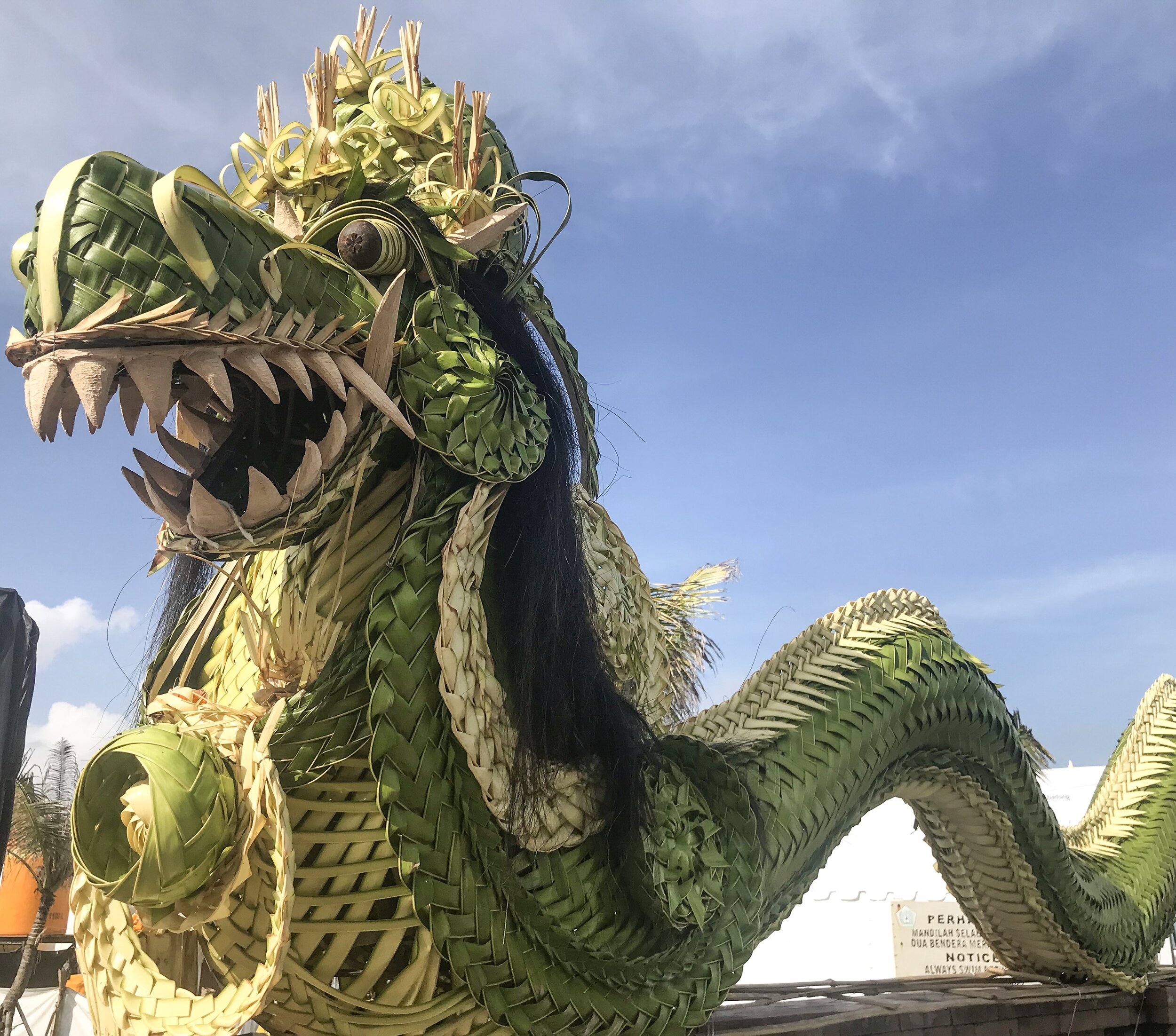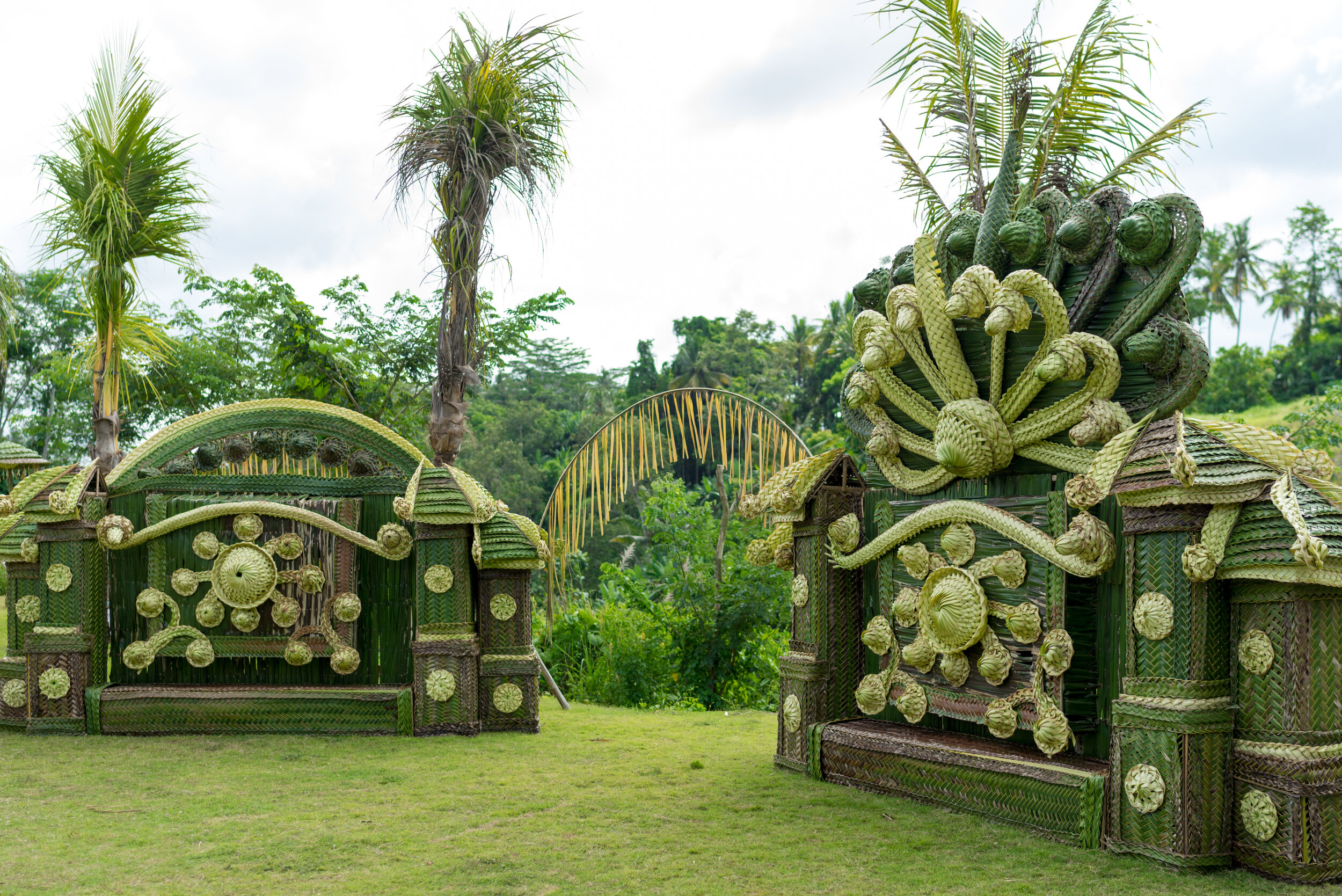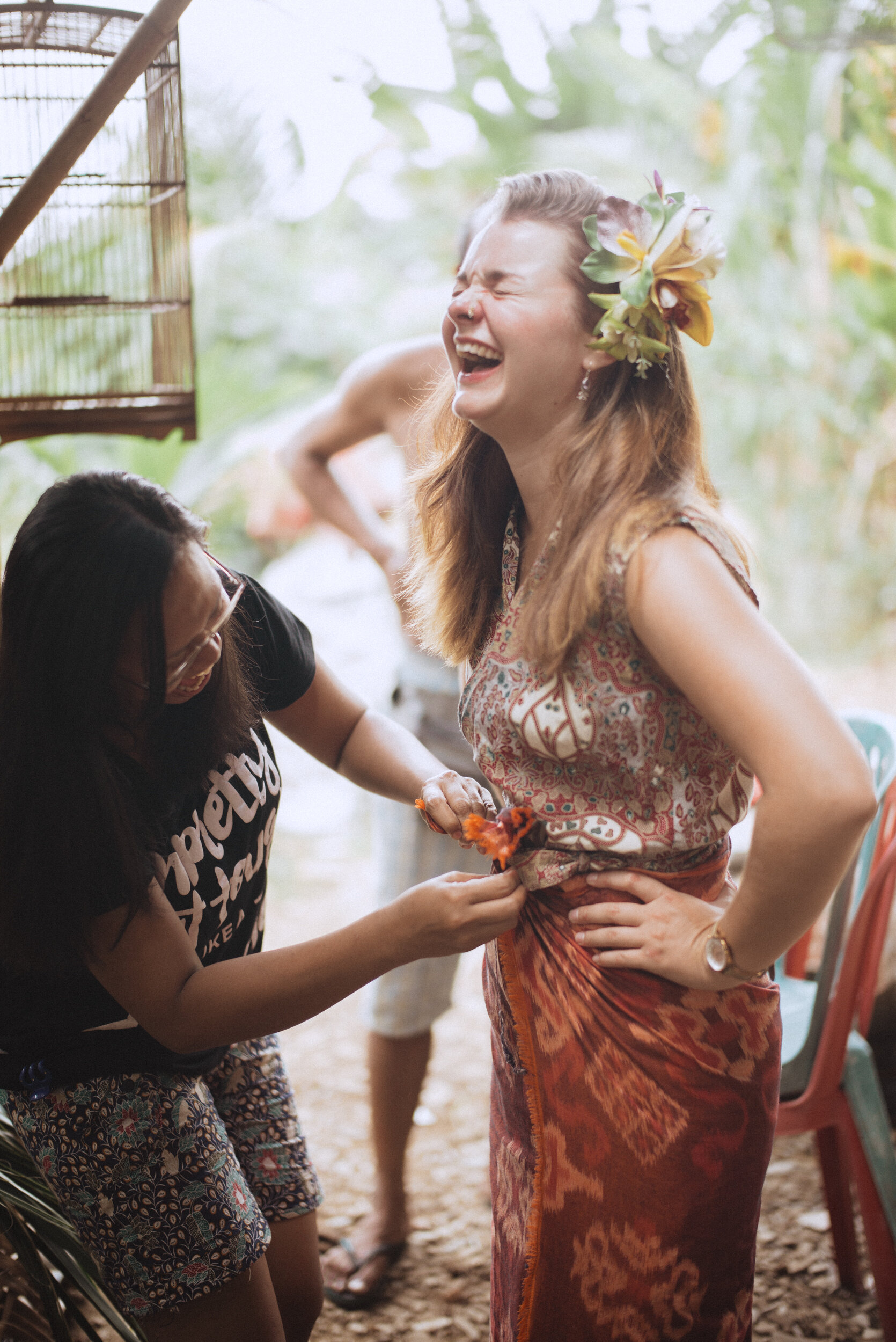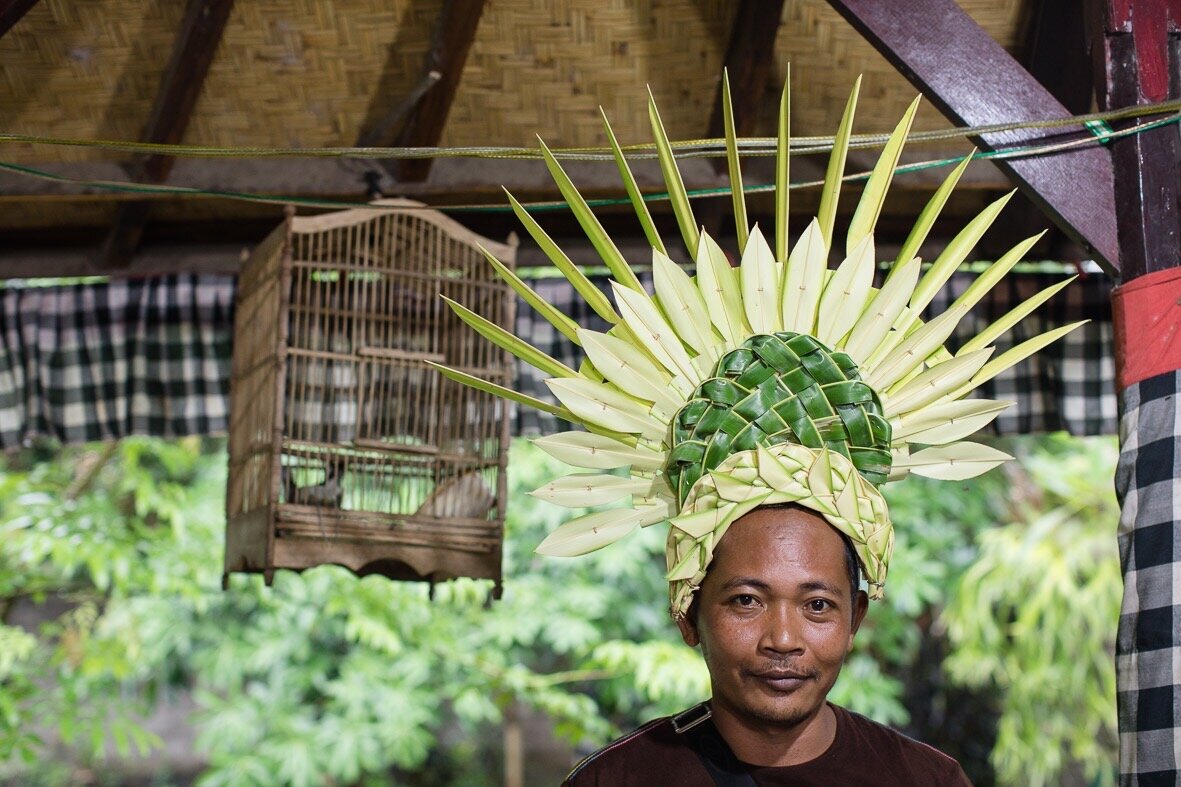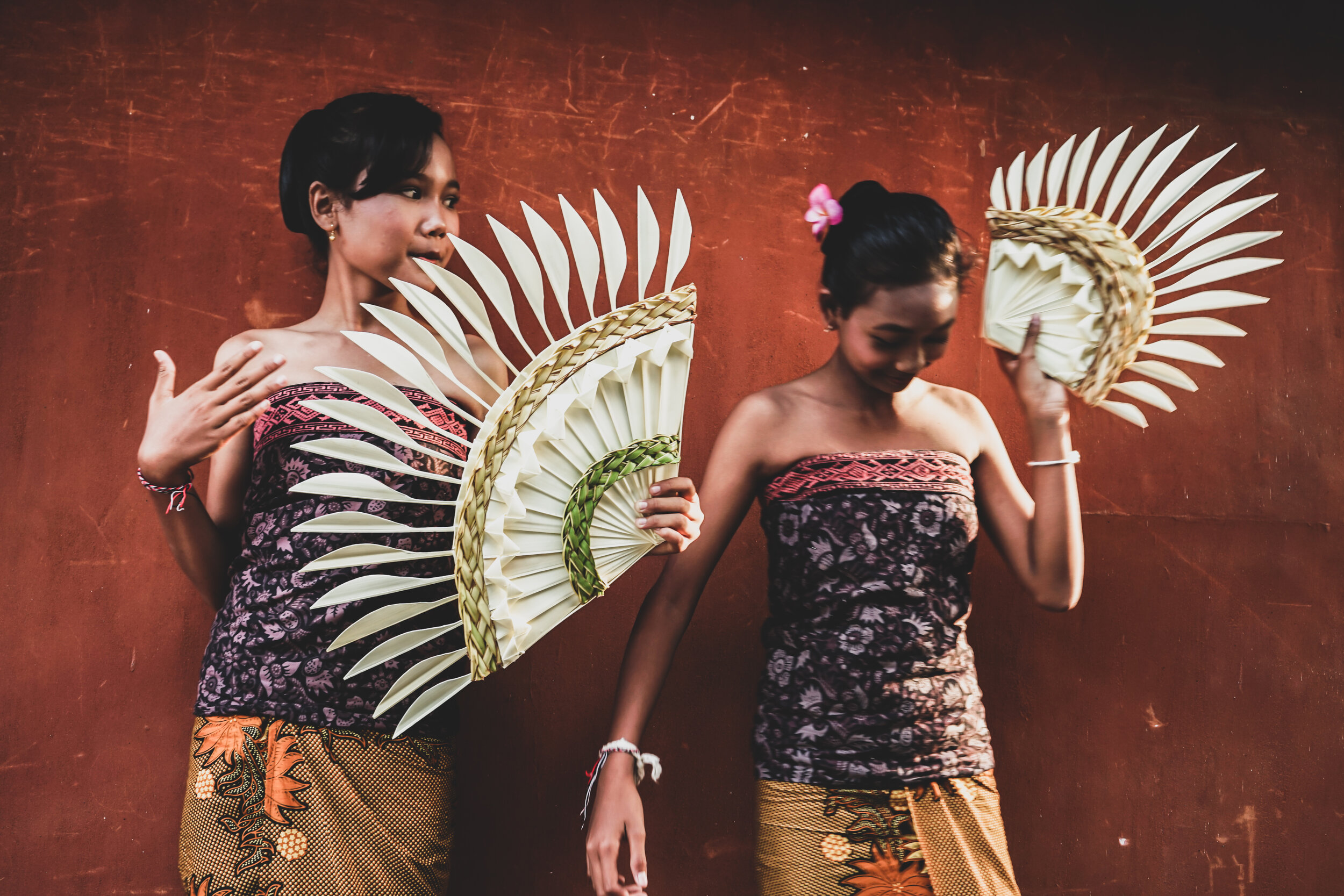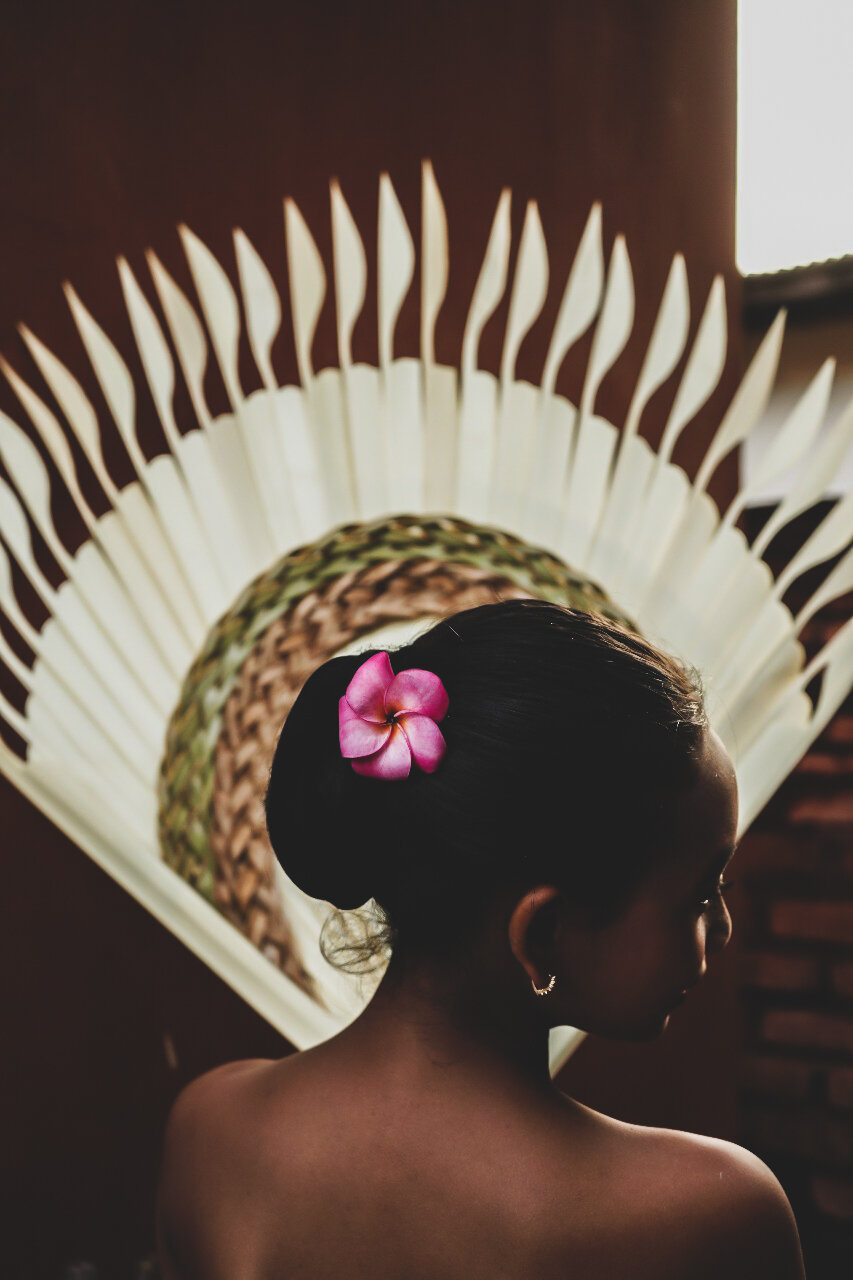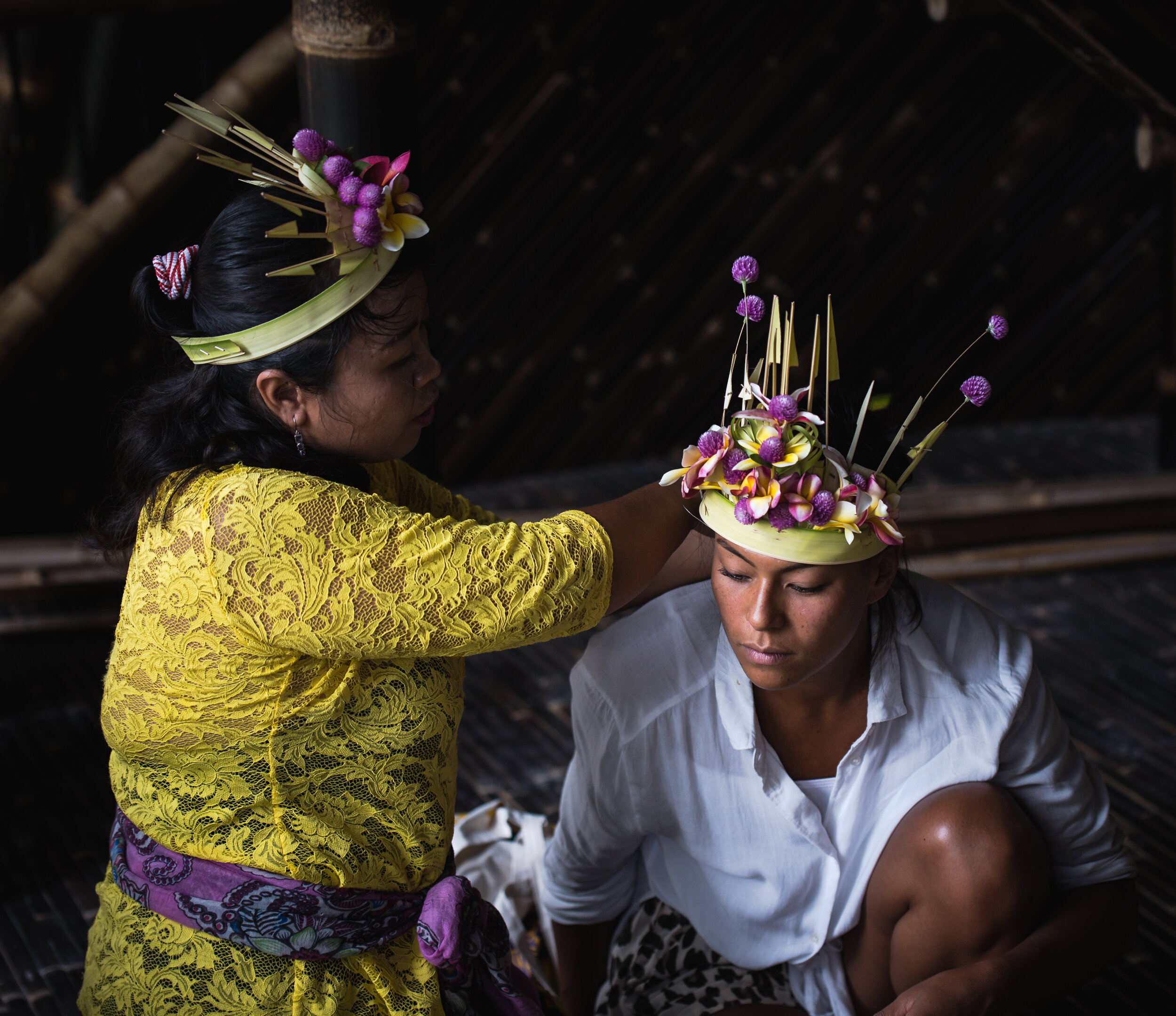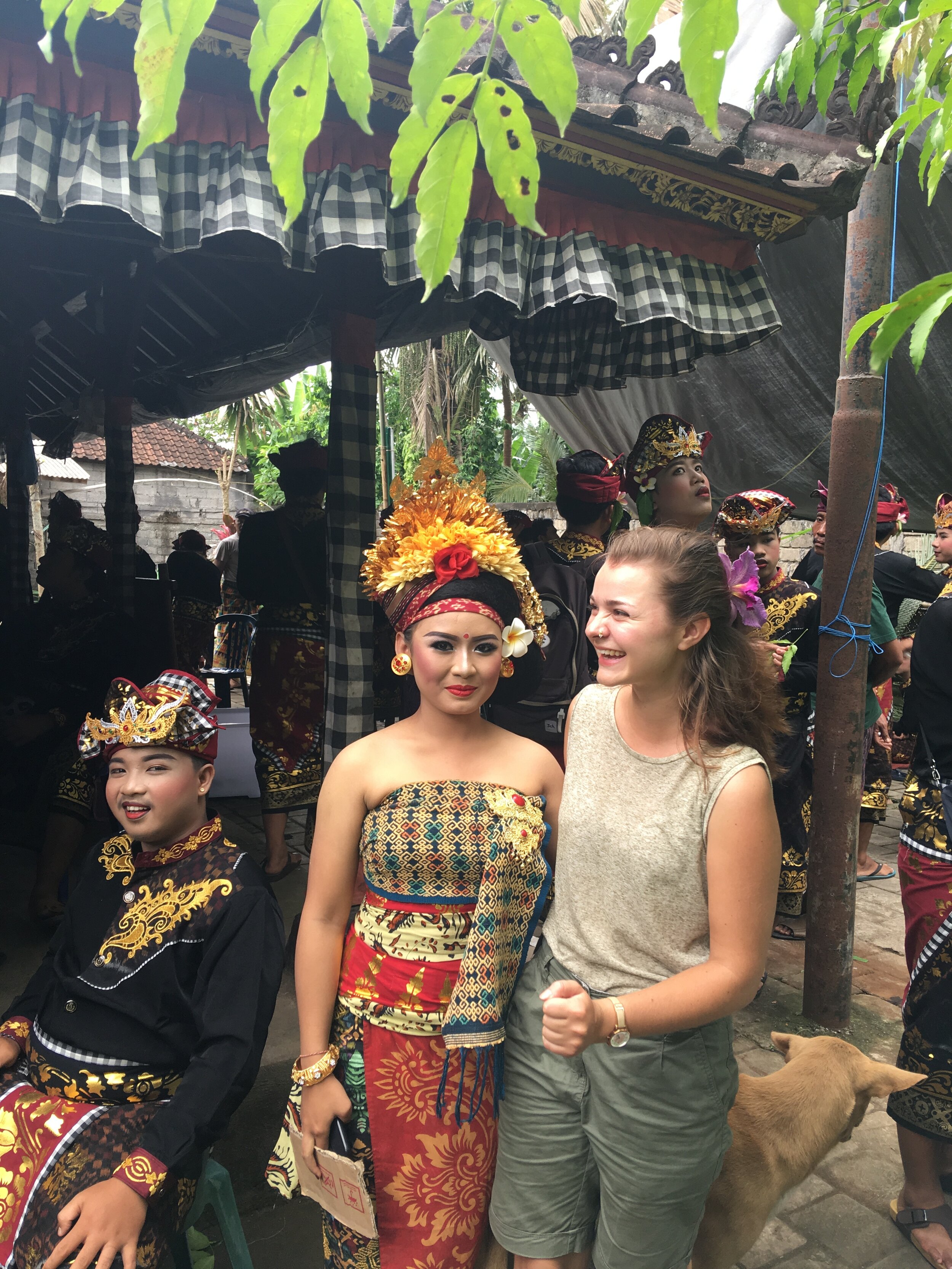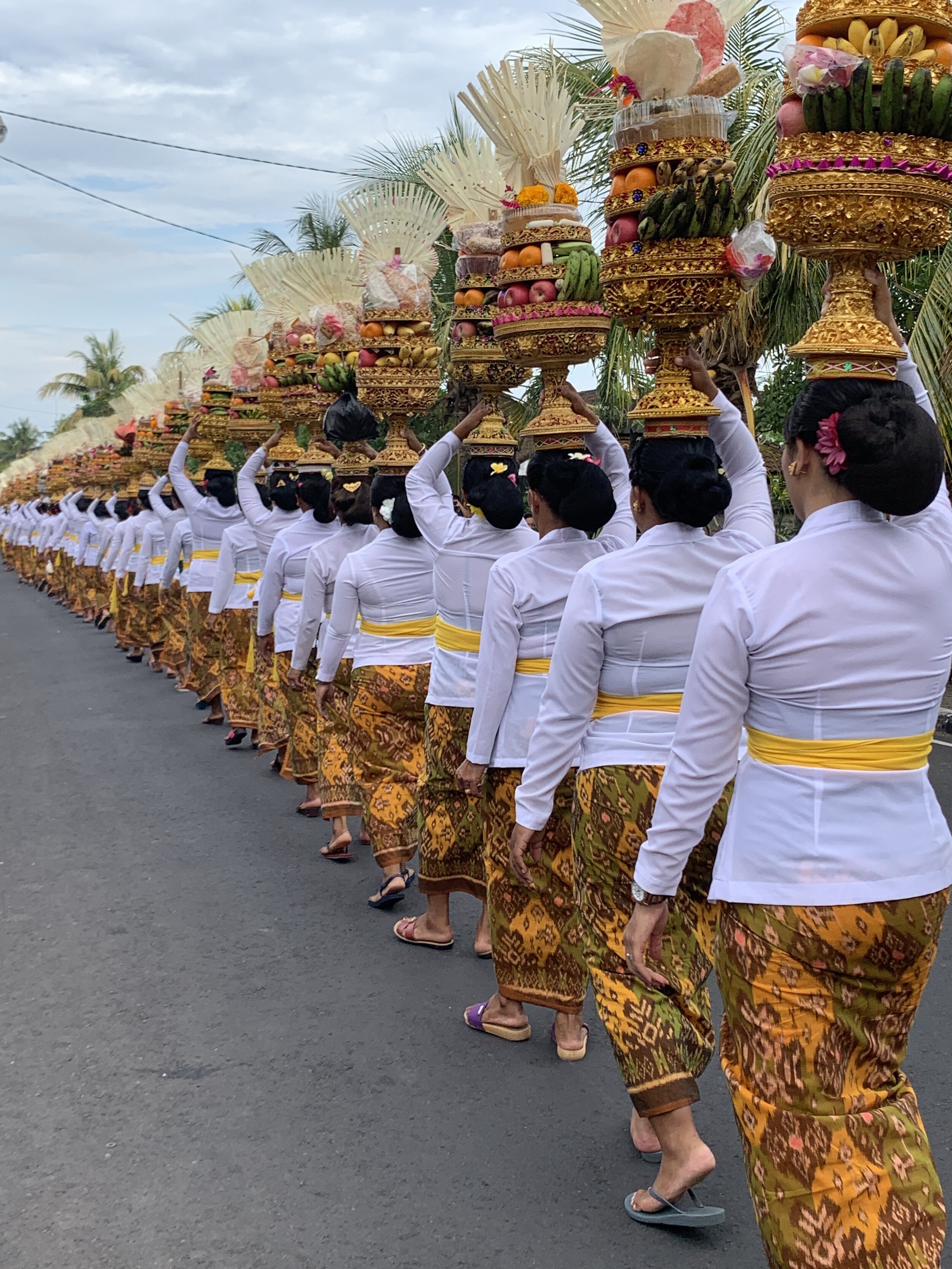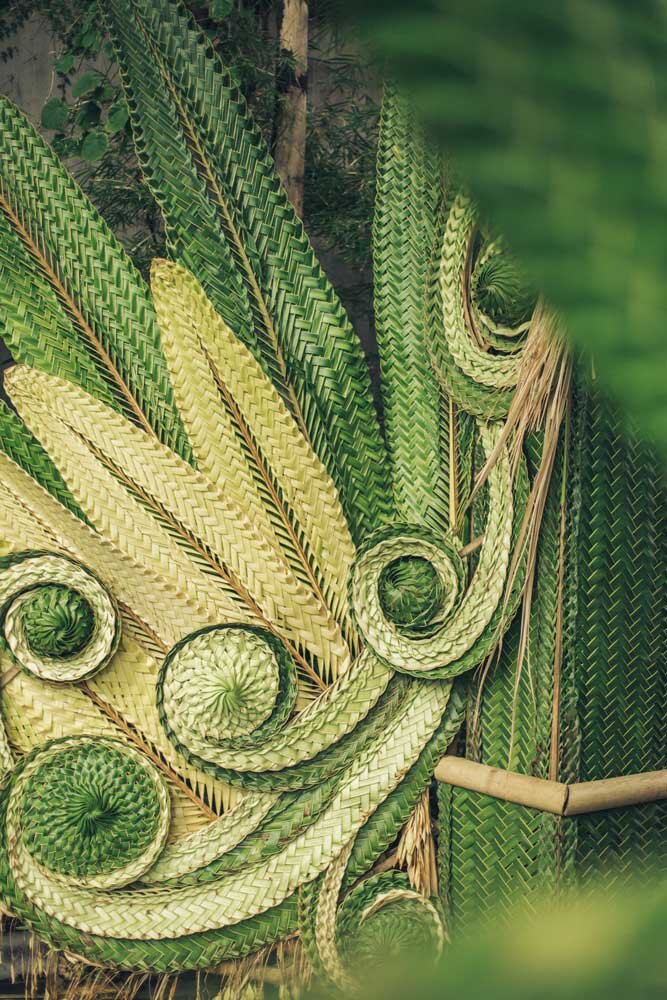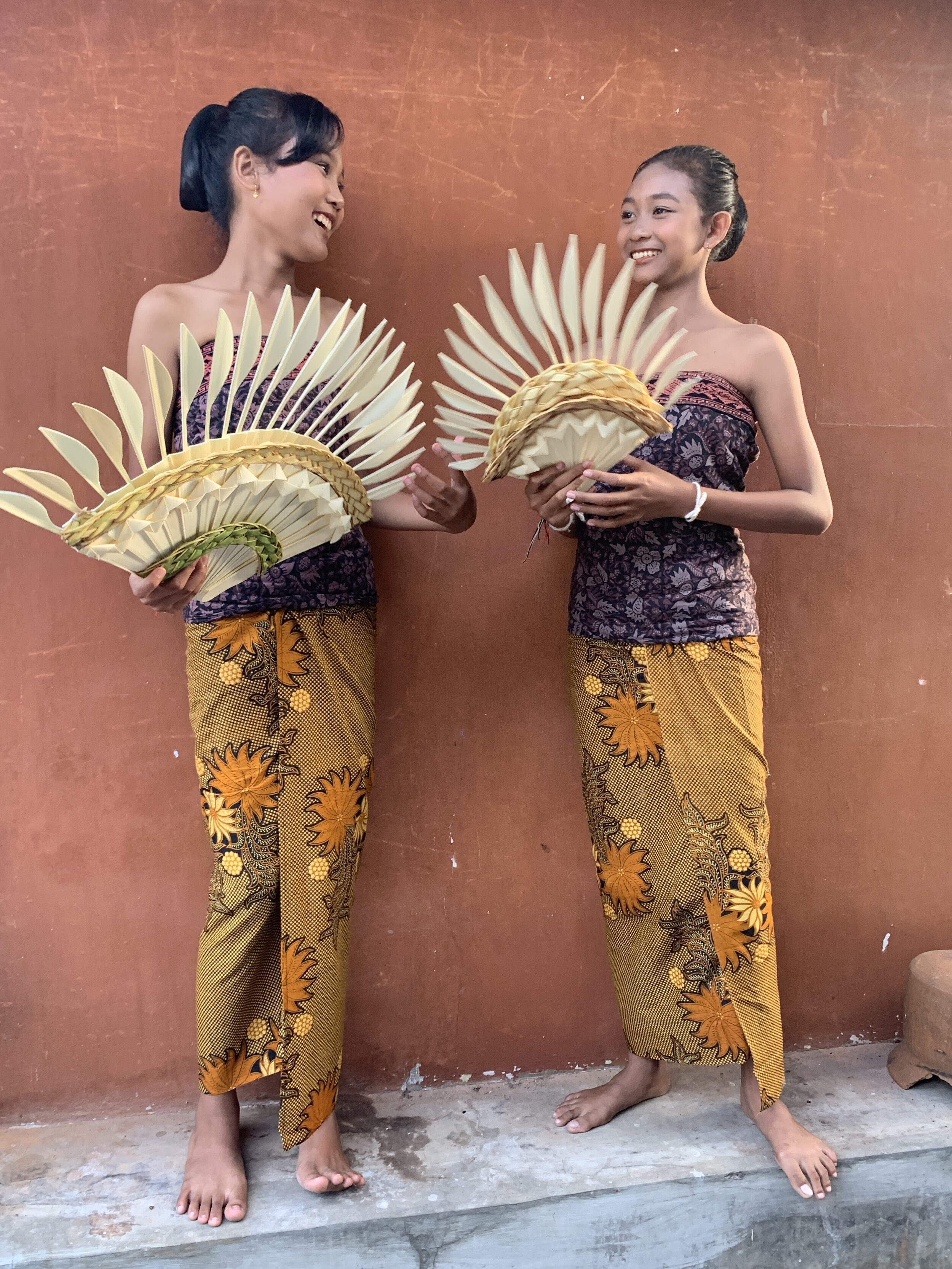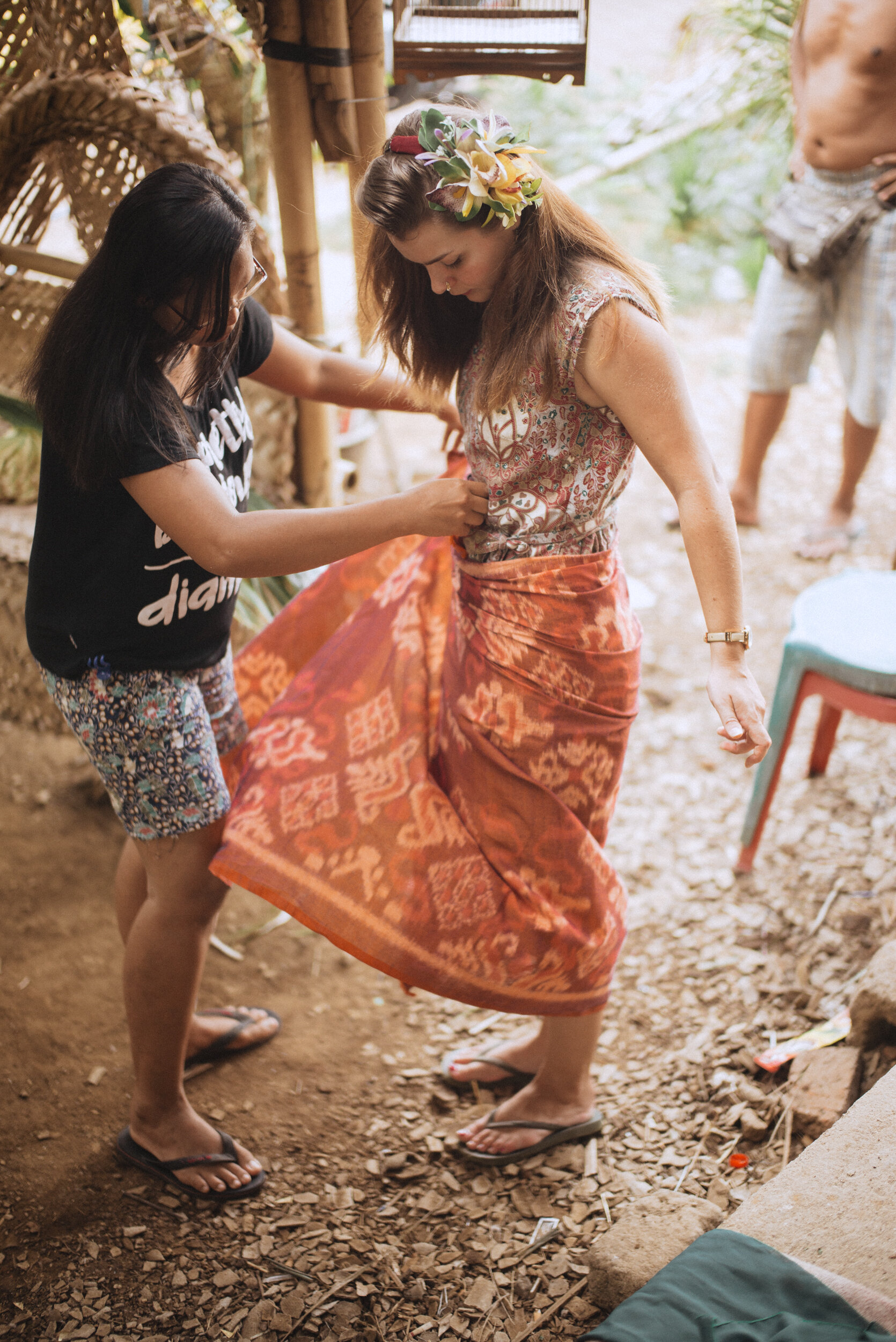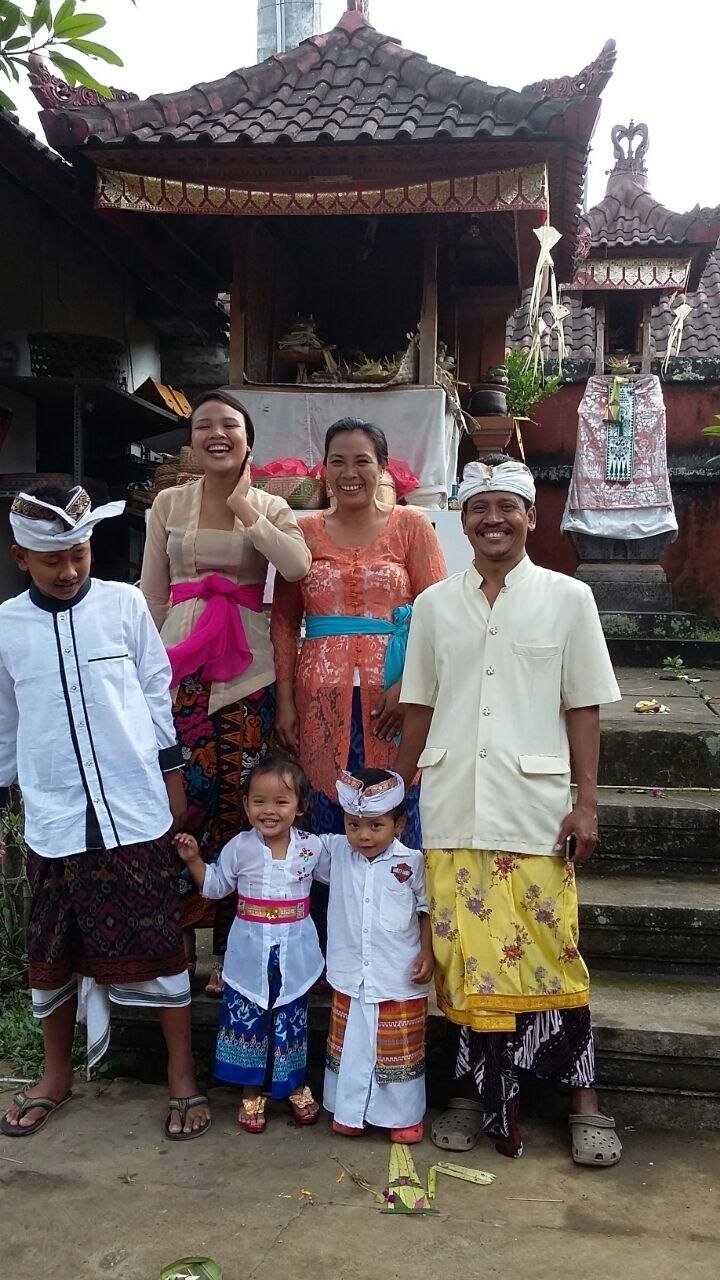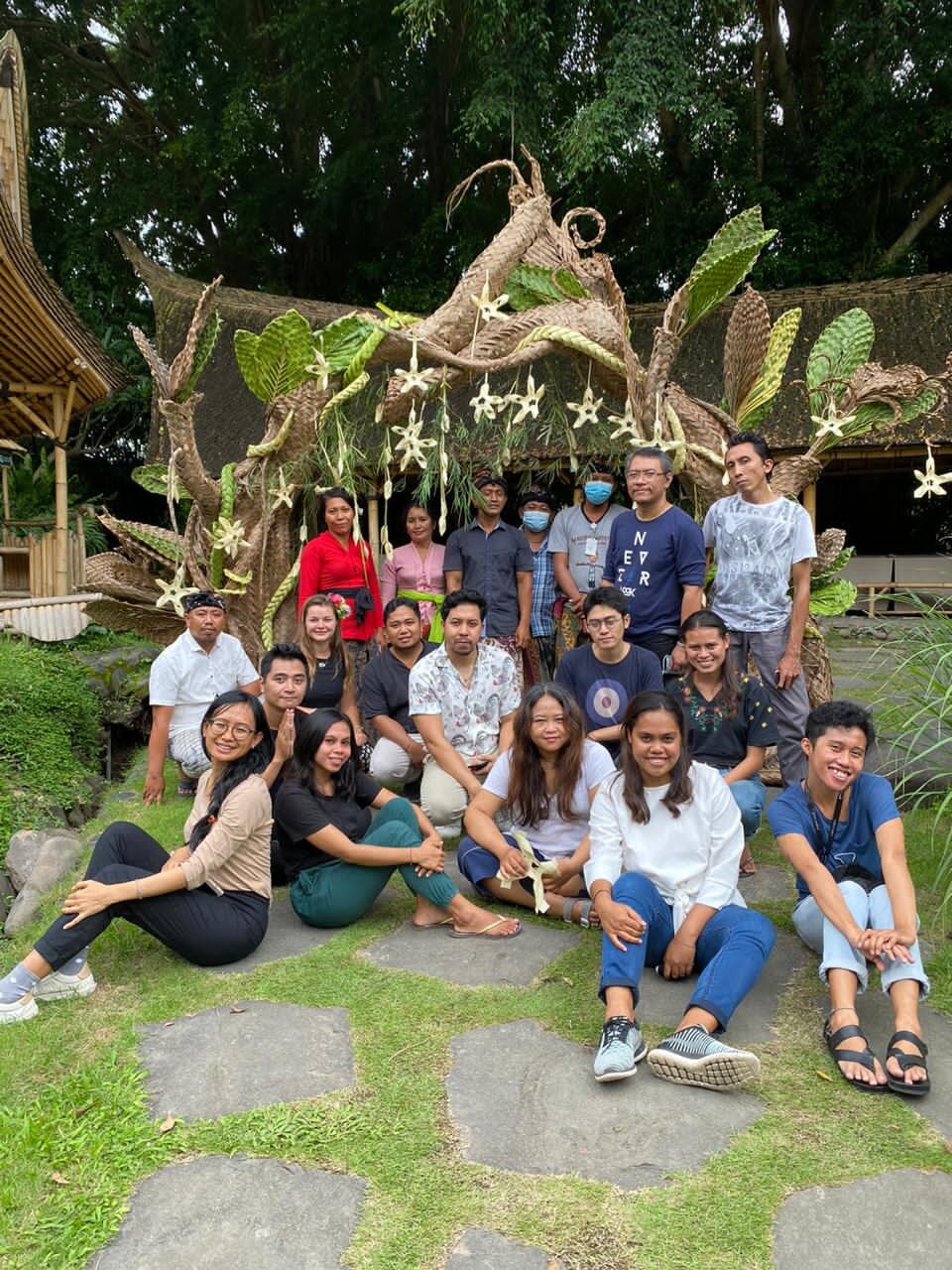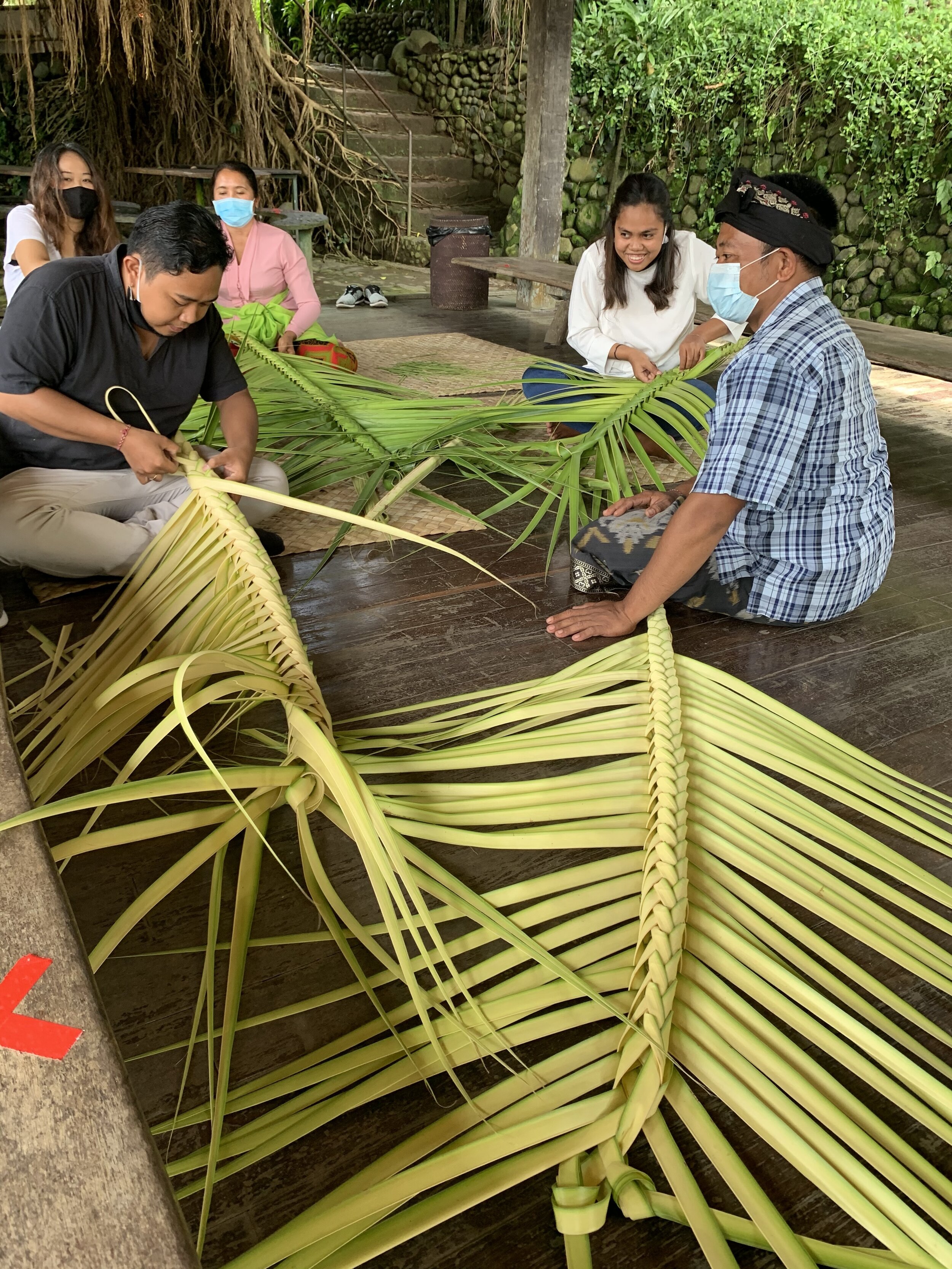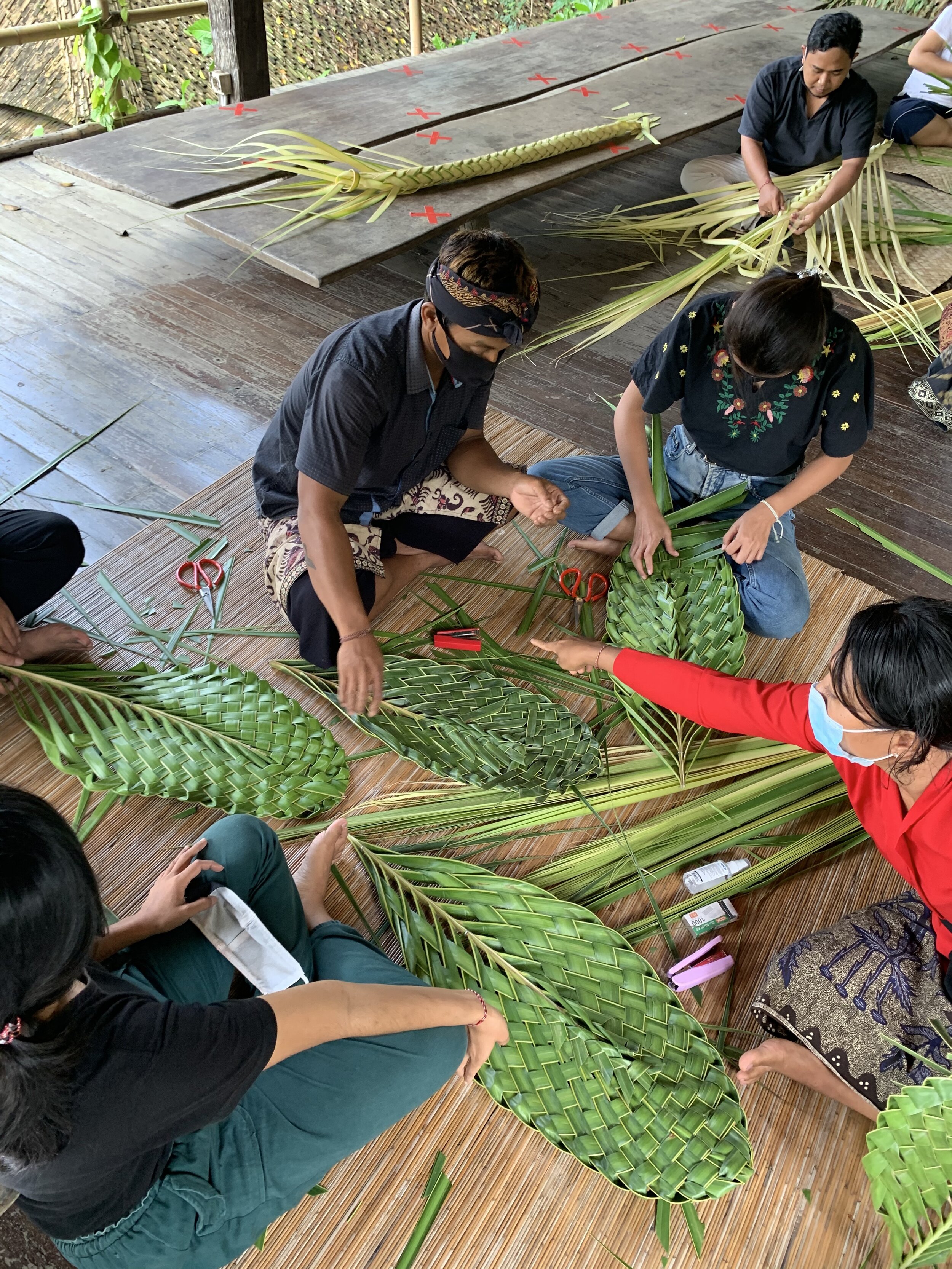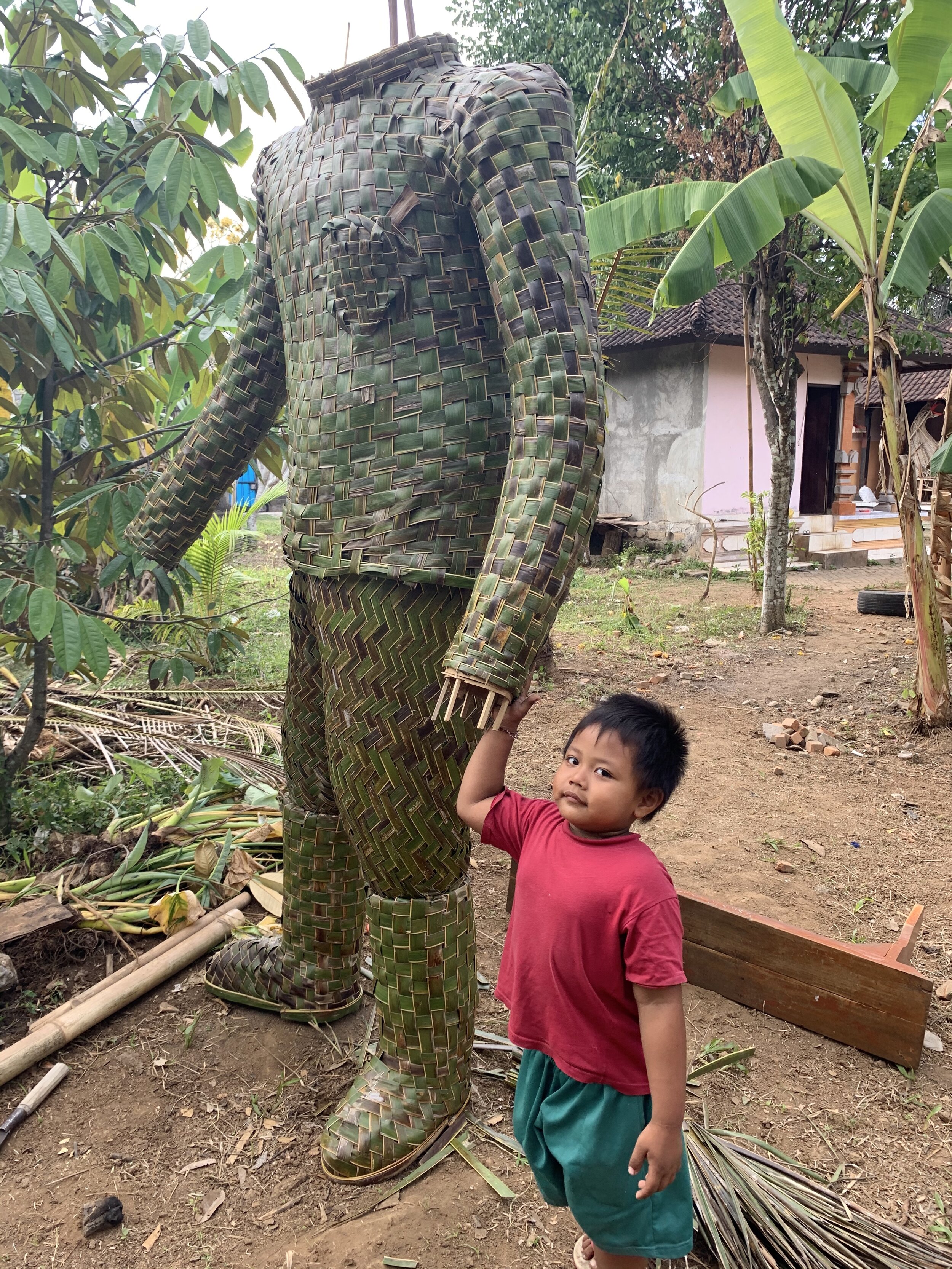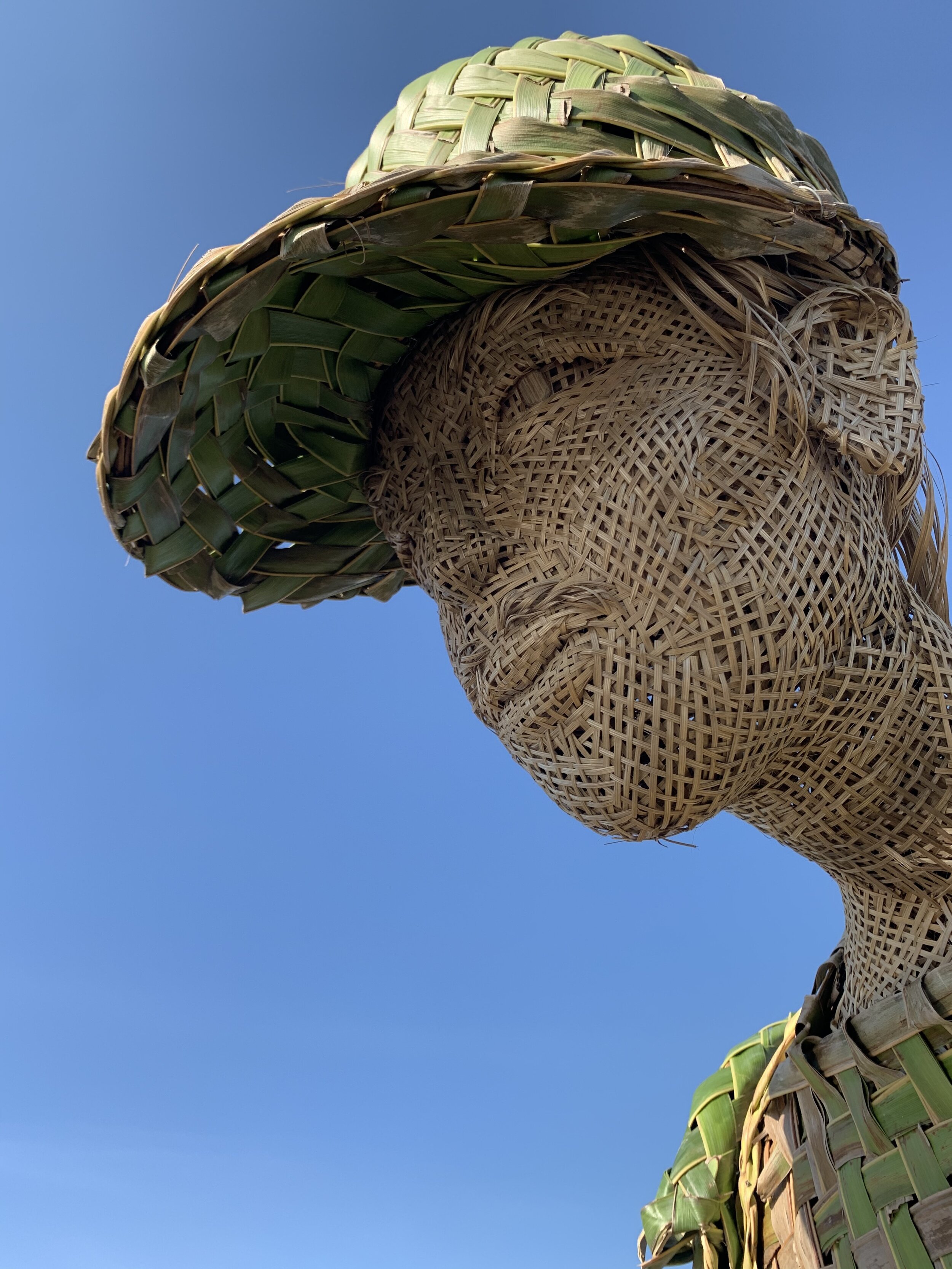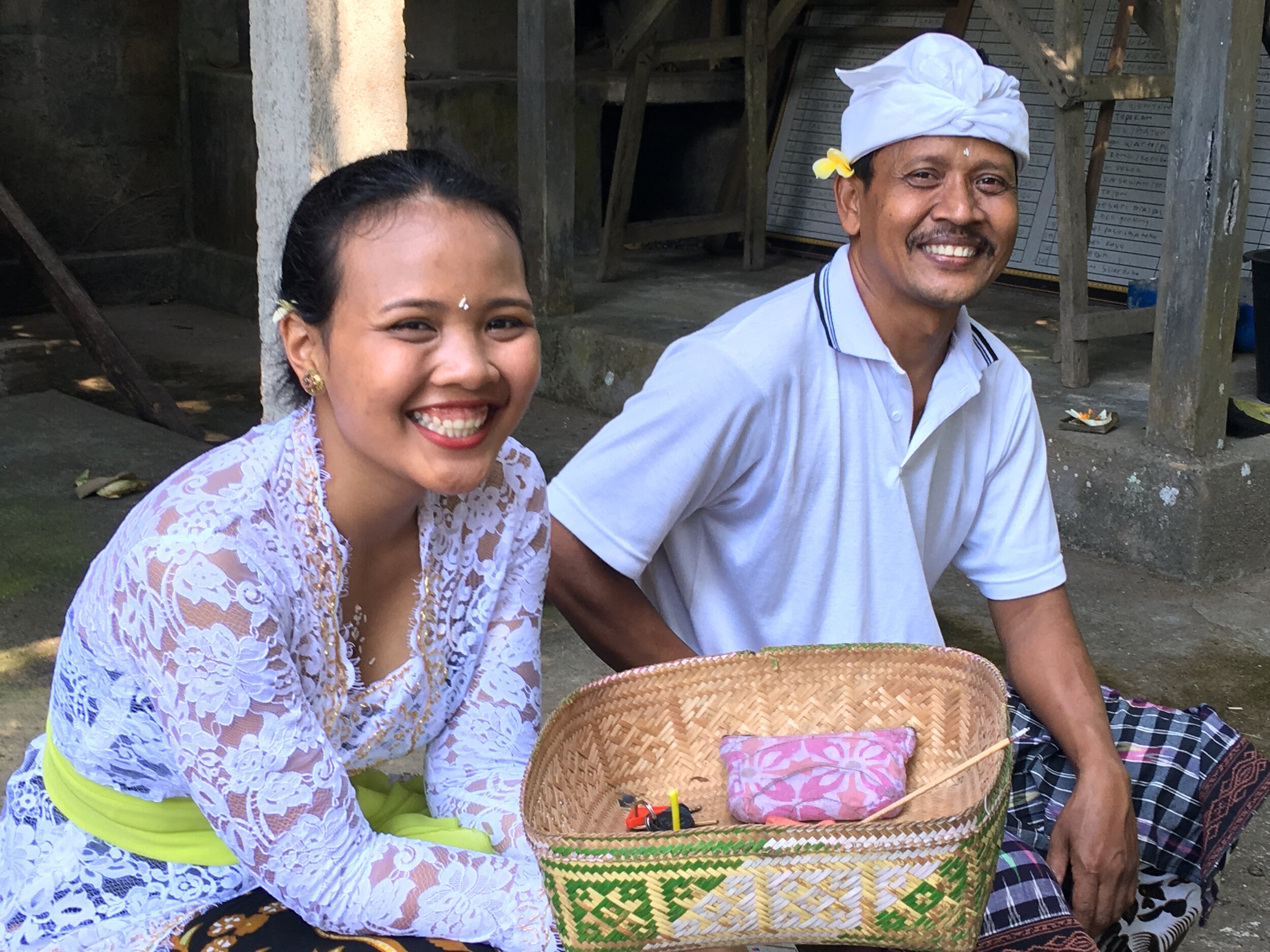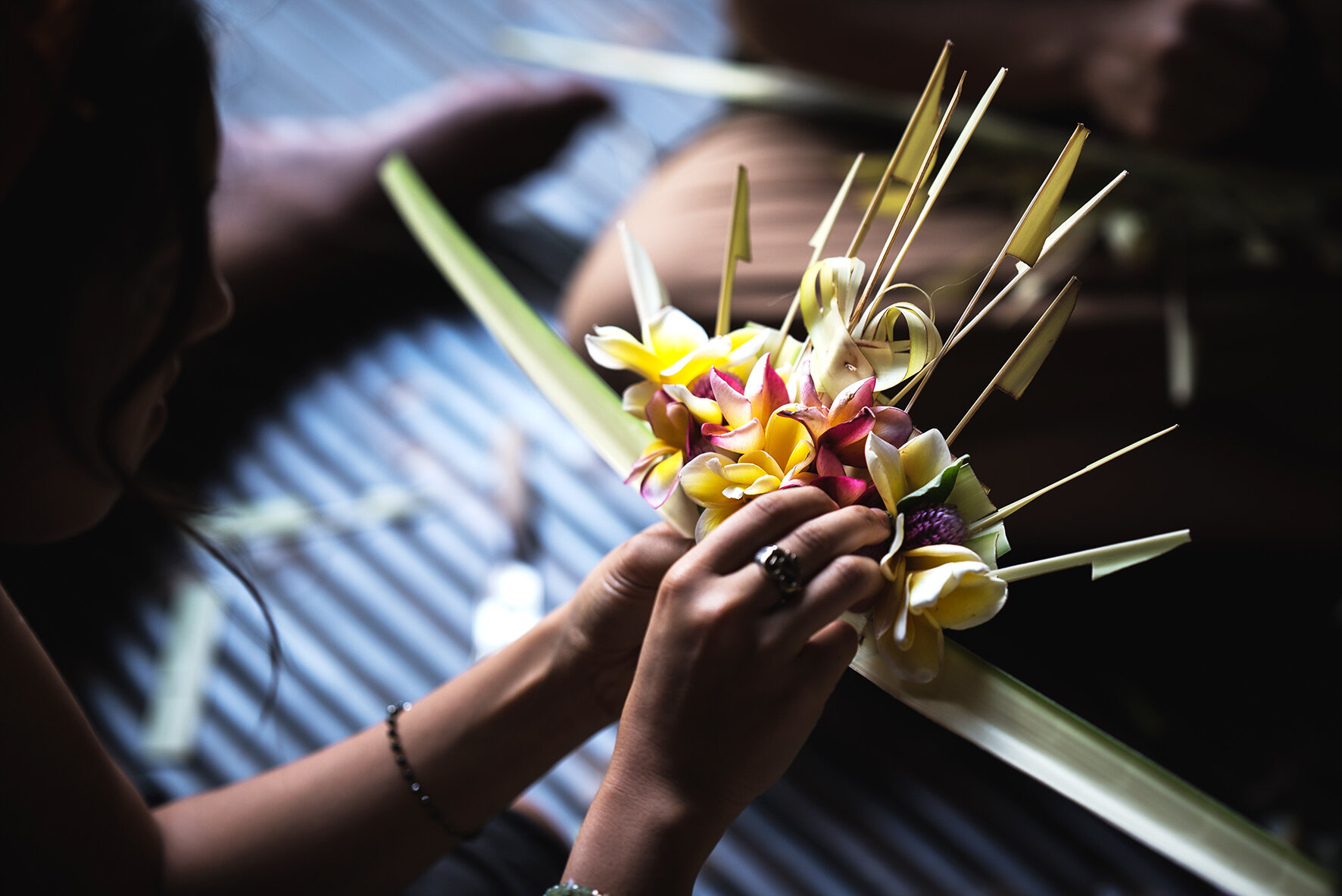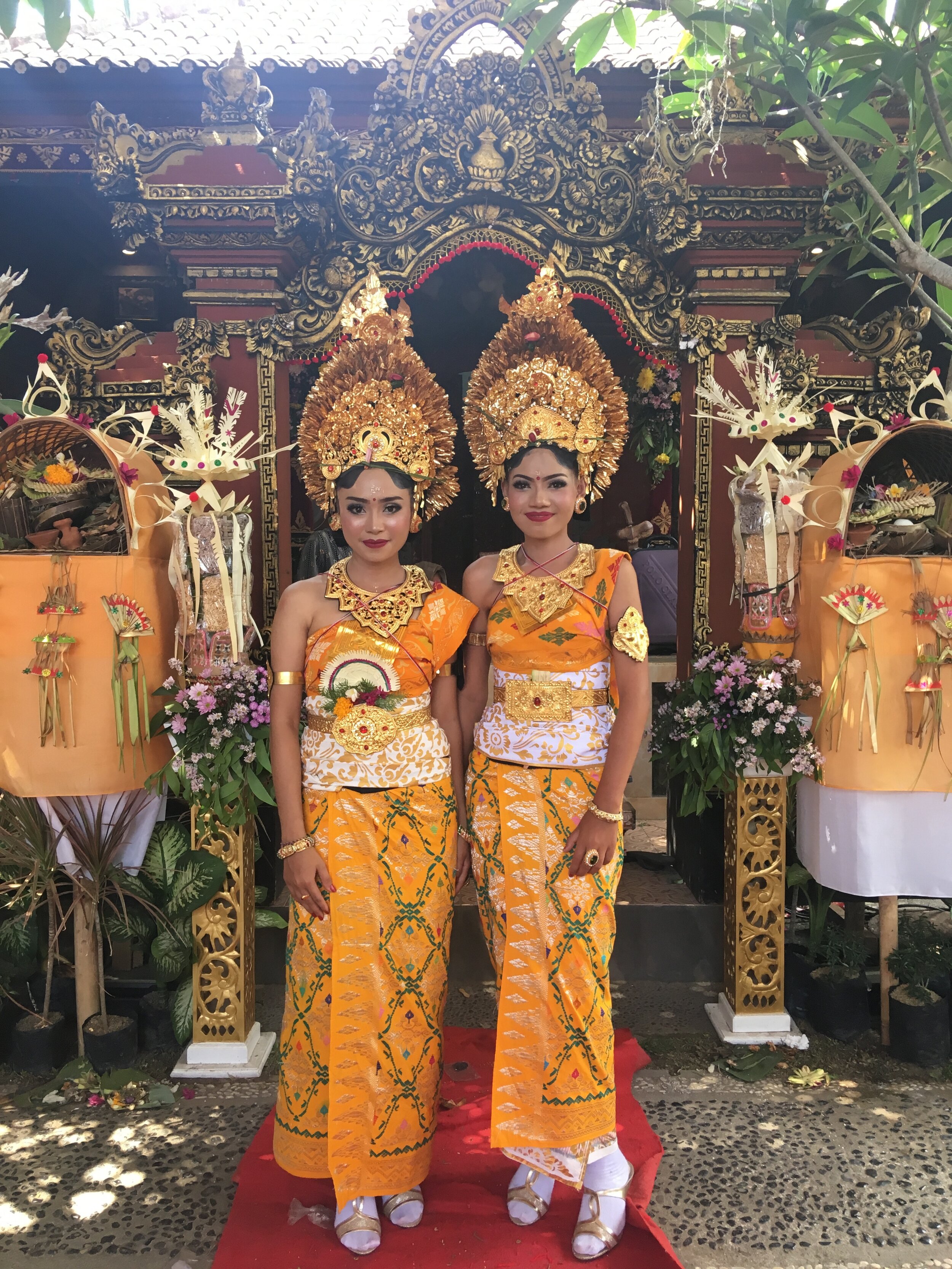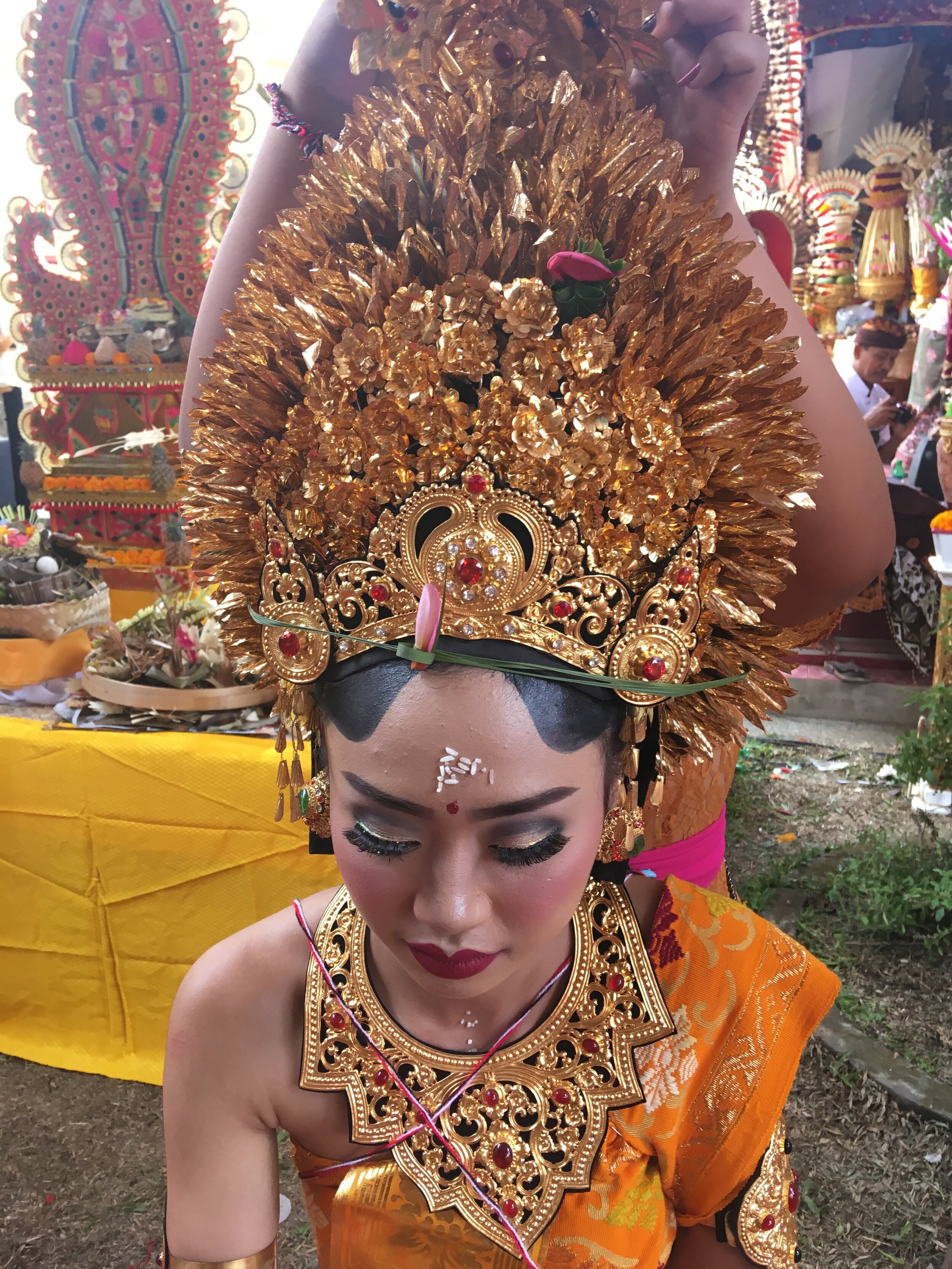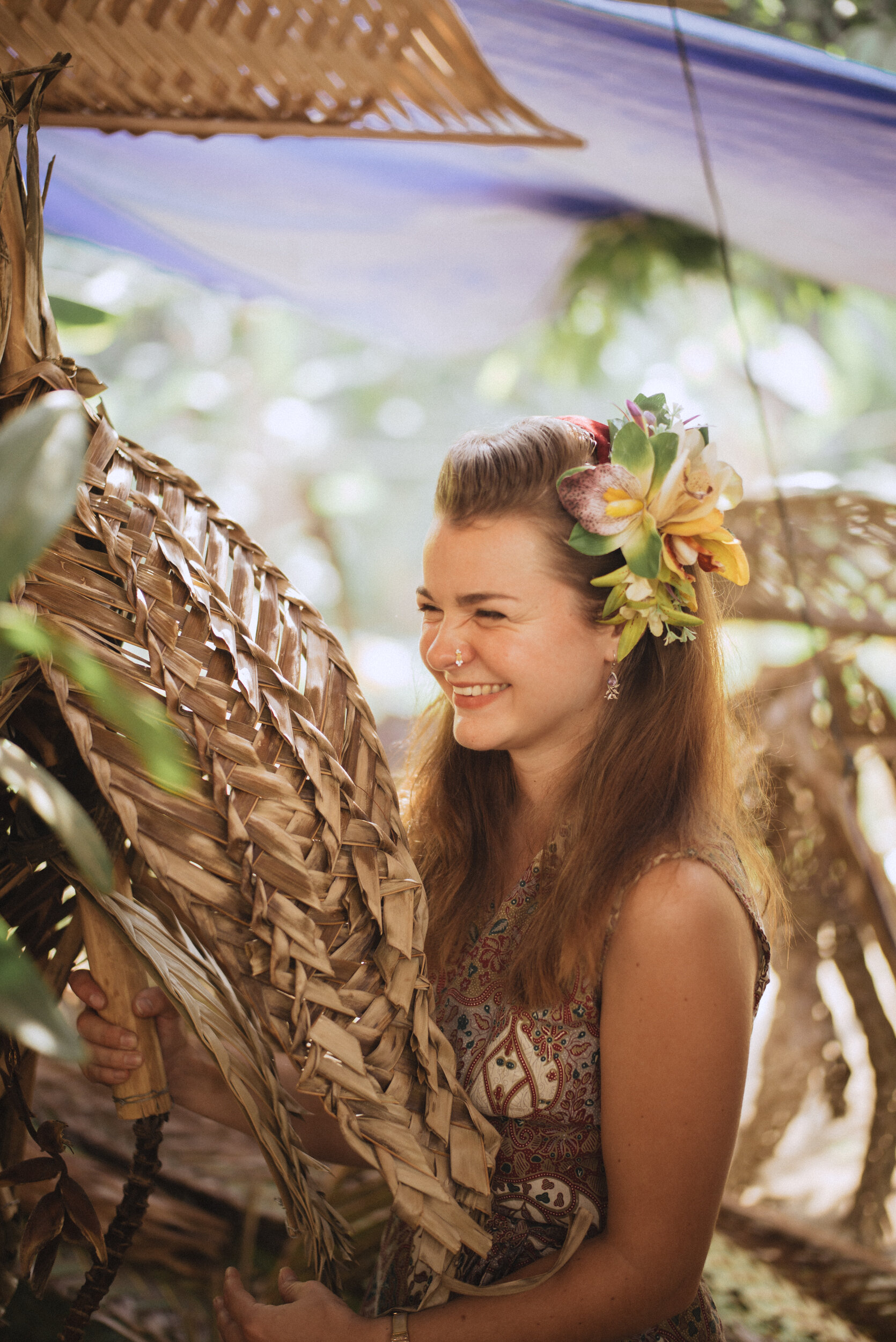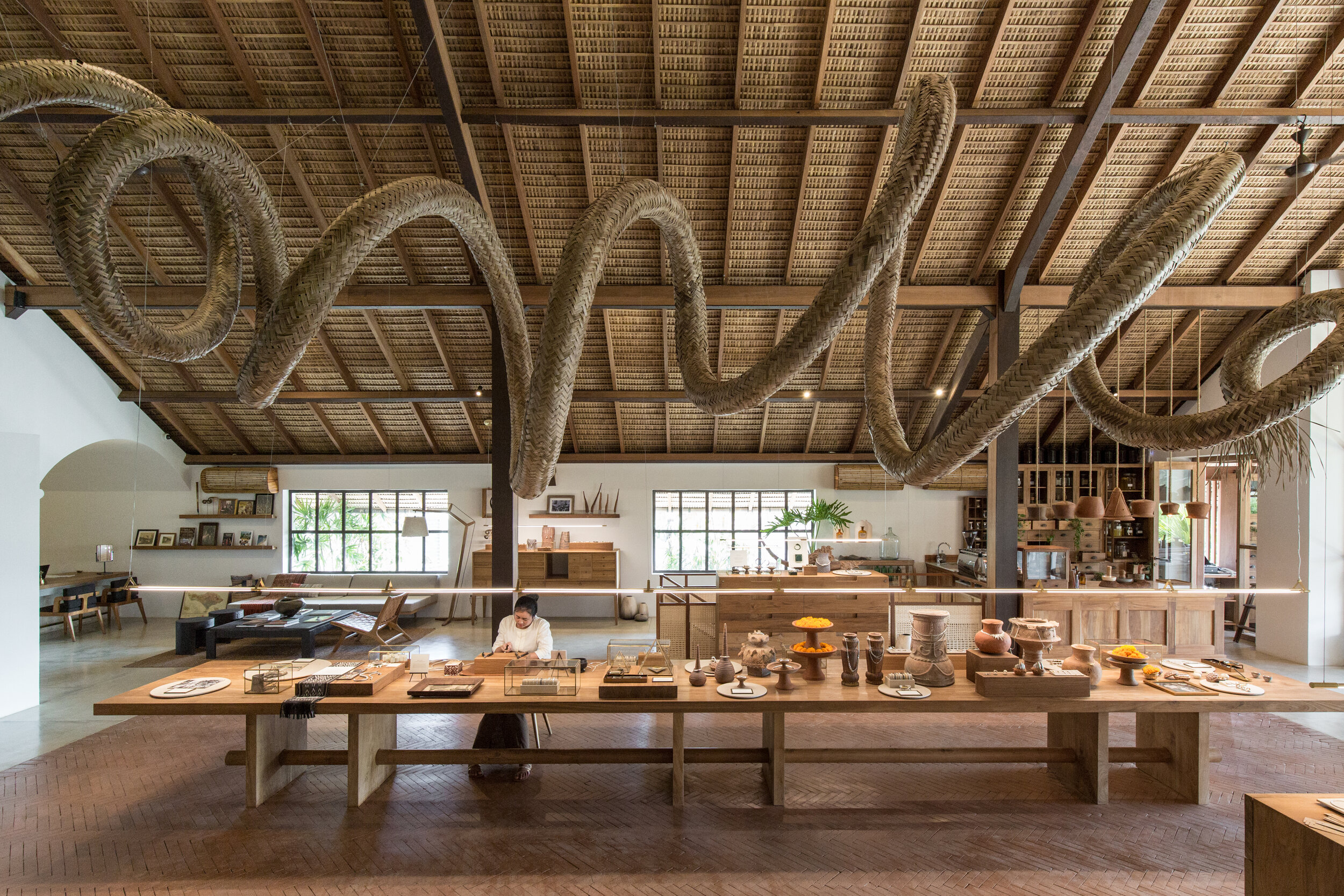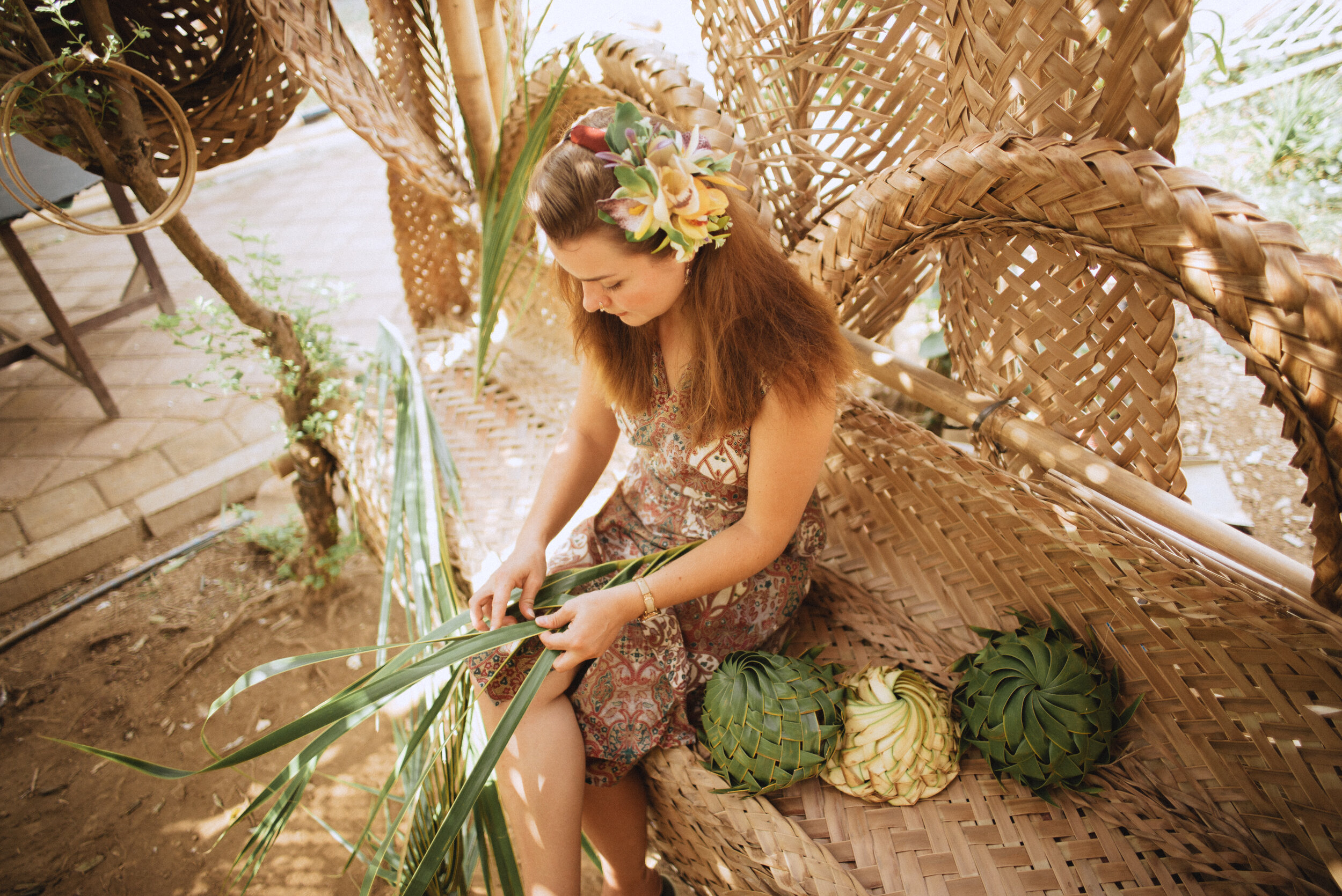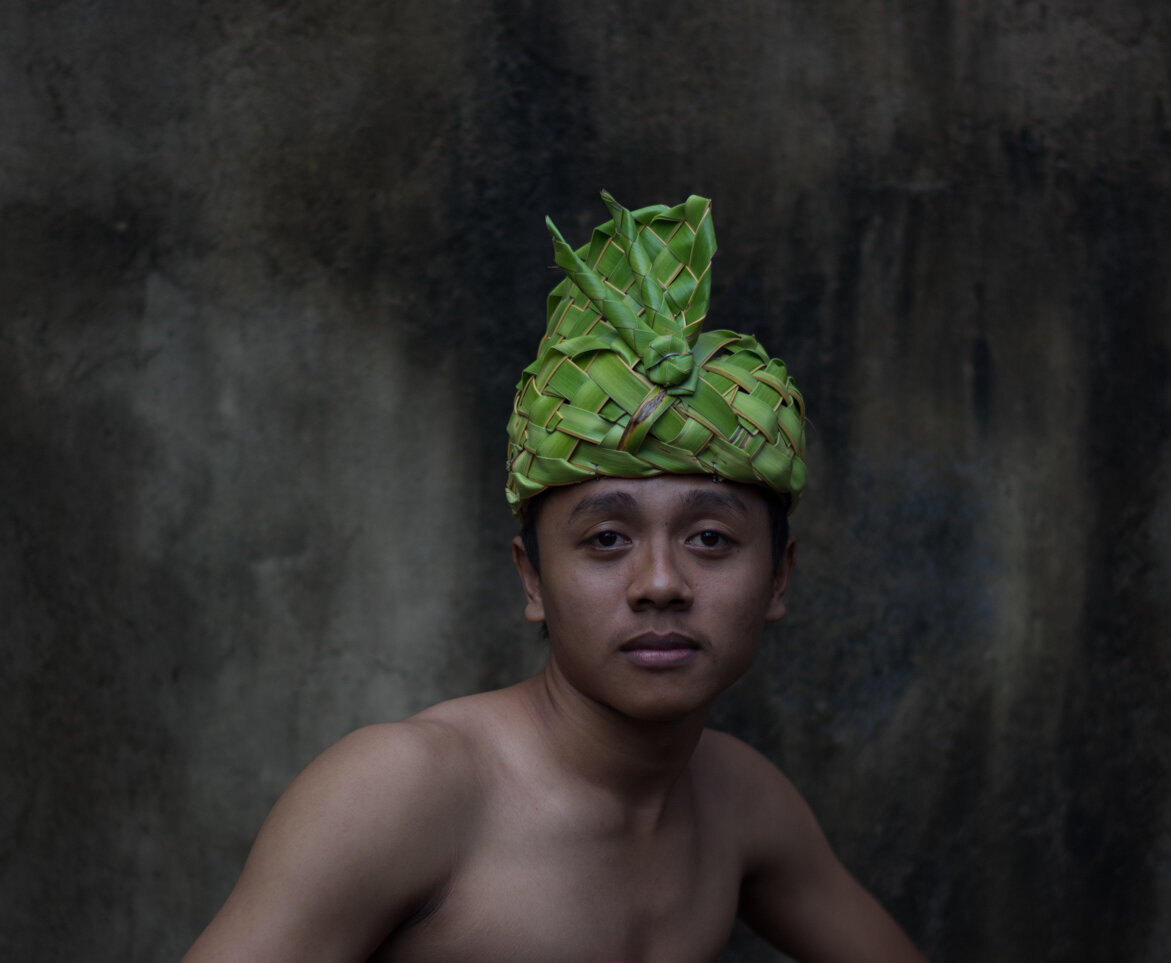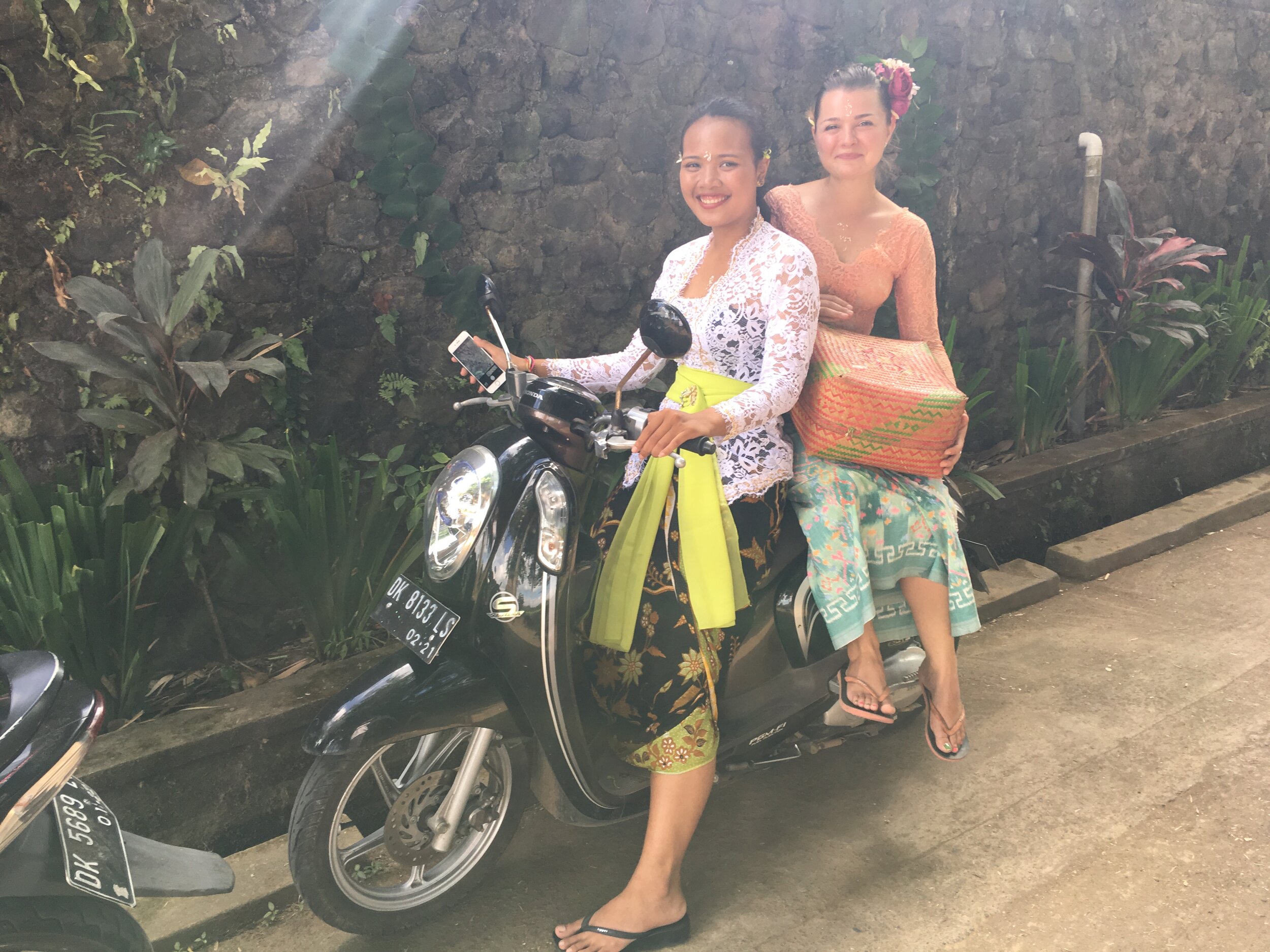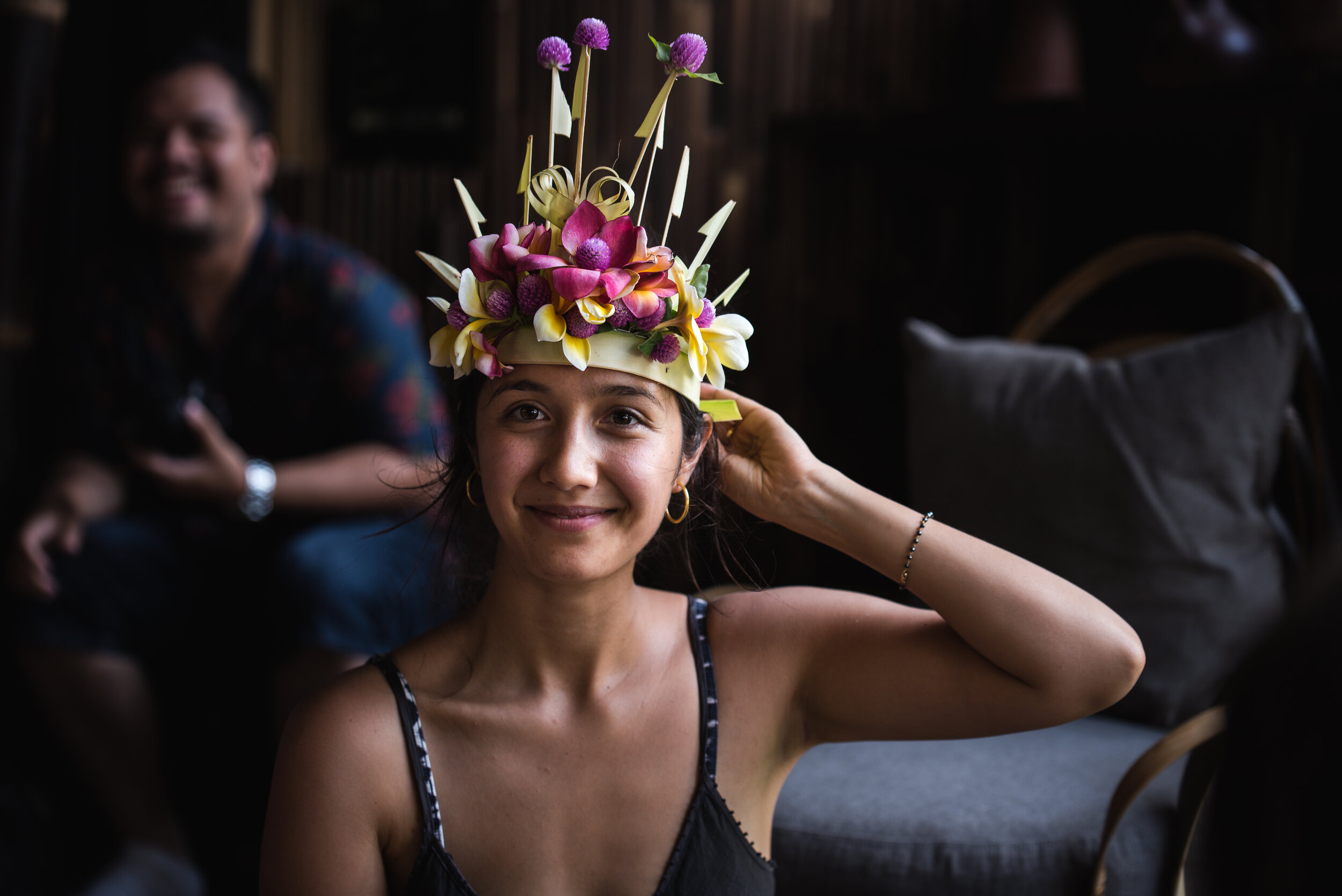SLOW MADE in Bali… Make A Scene!
WHERE LIFE IS
INDAH
STEALING HEARTS ALL OVER THE WORLD, BALI IS ALREADY WELL-ESTABLISHED AS THE DREAM SCENE TRAVEL DESTINATION. BUT ADDING TO HER MULTI-SENSORIAL ISLAND EXPERIENCE ARE THE SLOW-WOVEN CREATIONS THAT ONLY EMBELLISH BALI’S INTOXICATING ALLURE.
Natural, sustainable and incredible… the artisan team at Make a Scene combine traditional craftsmanship with wild imagination to create theatrical designs set to take the world stage, without being wastefuL.
SLOW MADE MAKE A SCENE! | DESTINATION BALI, INDONESIA | INTERVIEW WITH CHLOE ROSE QUINN (Creative Director)
PHOTOGRAPHY KINDLY CONTRIBUTED BY MAKE A SCENE, BALI!
MAKE A SCENE! IS A BALI-BASED ARTISAN TEAM THAT CREATE LARGER-THAN-LIFE SCULPTURES, ART SCAPES AND EVENT SETTINGS THAT EMBRACE EVERYTHING TRUE TO THE BALINESE WAY: CULTURAL STORYTELLING, TRADITIONAL CRAFTSMANSHIP, ARTISAN INGENUITY, NATURAL BEAUTY, COMMUNITY SPIRIT, CEREMONIAL SYMBOLISM, SPIRITUALITY AND CELEBRATION FOR PEACE, LOVE AND JOY. HOW DID THE ORIGINAL CONCEPT OF ‘MAKE A SCENE’ COME TO LIGHT?
Make A Scene! is a play on words. I come from a theatrical background where I was trained to make scenes from plays come to life! On moving to Bali and witnessing the theatricality of wedding decorations on the island, I felt liberated to continue to think big and grandiose with my designs.
But the biggest breakthrough ever, was my discovery of the weavers in Mengwi, which shone the light on leaves being the key material of choice for creating beautiful art. This collaboration with these local weaving artisans led to Make A Scene Bali!.
YOUR VISION IS A CLEAR EXAMPLE OF WHY FOLLOWING HEART CAN GO BEYOND SELF TO RADIATE MORE JOY TO THE WORLD. WHEN DID MAKE A SCENE! MAKE COMPLETE SENSE AS A DECISION TO RELOCATE YOUR WORK/LIFE FROM THE UK TO BALI?
I first came out to Bali on holiday at the start of my university degree. We stayed in a home stay in a traditional village called Bona, and the family were so welcoming, immersing us into the way of local Balinese culture. It was on that first trip that I fell in love with the island, the colours, the craftsmanship, the landscape… and I returned year, after year, after year.
It’s the place that makes my soul happy. The original family I was staying with introduced me to a local artisan workshop that built and installed carved polystyrene wedding dekorasi (decorations). They were happy to take me on as an apprentice, so I took the plunge and moved to Bali for a six month trial. It was the best move I’ve ever made and Bali has looked after me ever since.
YOU’RE AN AWARD-WINNING SET DESIGNER ORIGINALLY TRAINED WITH IMPRESSIVE CAREER EXPERIENCE IN THE UK. WHERE DID YOU GROW UP AND THEN WORK IN THE UK? WHERE DO YOU LIVE AND WORK NOW?
I was born and raised in Bristol, England and studied Theatre Design in Cardiff, at The Royal Welsh College of Music and Drama, where I was an award-winning student. Unfortunately, in the world of theatre, it can often be at the direction of a theatre Director, where individual creativity for a designer can be crushed. That’s when I knew theatre would not be my industry of choice to pursue.
Starting out as a freelance designer, I did find it challenging to find a creative area to best fit my passions and skills. But the light bulb moment came on completing a very successful design project for a themed wedding reception. I’m now living in Ubud, Bali and the team and I create event sets and designs all over Bali and beyond, most recently exporting our work to New York.
AS THE FOUNDING CREATIVE DIRECTOR BEHIND THESE BEAUTIFULLY CRAFTED SCENES, PLEASE SHARE YOUR GREATEST INSPIRATION AS WELL AS THE WONDERFUL REWARDS THAT MUST COME FROM WORKING WITH THE LOCAL ARTISANS USING TRADITIONAL MATERIALS AND METHODS.
My training as a Theatre Designer has taught me to be like a magpie in my research. I look at catwalk designs, fashion shoots, fine art sculptures, installations, theatre sets and nature. In addition to all of this, it is Bali’s rich culture, heritage and religious rituals that continue to fascinate me. Travel too! I am constantly taking photos and making notes whenever I travel. I have 37,000 photos stored on my phone as well as a photographic memory for facts. Like a treasure trove of potential ideas just waiting for the right time to bloom.
And I count my blessings every day for the day that I met Gus Ari… my creative partner. He too is an innovator who thinks outside the box, and, unusual for the Balinese, he is a risk taker! He’s my kindred spirit. Gus has assembled a team of seven outstanding weavers, men and women who in turn have undoubtedly become an extension of my family in Bali.
Behind the inspirations, I am most proud to have fostered an ethos within the team, to encourage the craftswomen, who have risen up the ranks and defied social barriers. They have become role models for their children and community in general.
WHAT SKILLS ARE REQUIRED BY THE ARTISANS? HOW OR WHERE HAVE THEY LEARNT THESE TRADITIONAL SKILLS?
Weaving with the coconut leaf has been passed down from generation to generation, by both mothers and fathers, as families gather and share the creativity and workload for the endless ceremonial offerings (mebanten) and decorations that come with Balinese religious life.
The female role, (daughters with their mothers or grandmothers), is usually specific to the making of offerings, while the males of the house normally take on the more decorative woven work. Gus has been great to teach and encouraged the women to weave alongside the men, keeping with tradition and quality standards. The other key skill is definitely patience! Weaving is all about following very structured rules, one wrong fold and the weave is off-course and you have to undo and start again. That is until you become so skilled that you can adopt ‘free-style’ weaving, which is the technique we use when we weave our three-dimensional sculptures, like dragon heads, snail shells, snakes, trees, human forms and ogres.
WHAT MATERIALS ARE USED?
Slepan and busung leaf are the traditional materials used for weaving menganyam. We have recently introduced white lontar leaf, from the same palm leaf family, for its longevity and contrasting colour. Other natural materials we use for embellishments are banana leaf and trunk, fruits, doc, bark and occasional flowers. Additionally, our artisan skills of ‘cutting’ which derive from their designs for elaborate offerings augment the finer details in our work.
MAKE A SCENE! IS NOT ONLY A GREAT INITIATIVE TO HELP SUPPORT LOCAL ARTISANS AND TRADITIONAL CRAFTSMANSHIP ON THE ISLAND, BUT YOU ALSO HOPE TO RAISE AWARENESS FOR THE ENVIRONMENTAL BENEFITS OF SLOW MADE PRODUCTION AS PART OF A ‘GREEN MOVEMENT’. IS EVERY SCENE THAT IS CREATED AT MAKE A SCENE! CRAFTED BY HAND USING ALL NATURAL MATERIALS?
Absolutely. All of our work is made from two types of coconut leaf. The slepan and busung, both sourced from west Bali. We strive to make all of our designs as biodegradable as possible. The finishing details are always crafted with natural materials such as bark, fruit, wood and doc (a black hair-like material used for the roofing of Balinese temples). All of our pieces can be dismantled, the bamboo structures can be reused and all of the leaf used goes into a juicy pile of organic waste. Only when essential do we strengthen our structures and joins with wire and a nail gun. We care about the whole process of our creations and continuous learning is important too, in order to remain eco-responsible in everything we do.
BLESSED WITH VOLCANIC BLACK SAND, MOUNTAINS, STREAMS, TERRACED, GREEN RICE FIELDS, LUSH FORESTS AND THE BEST COCONUT PALM TREES. ARE PALM TREE PLANTATIONS IN BALI SUSTAINABLY GROWN? HOW ARE MATERIALS HARVESTED?
We do our research and we endeavour to source the best quality leaf from responsible farmers in west Bali. We now have our own land in Mengwi and Tabanan where we are growing our own coconut trees. This is the team’s commitment to help encourage a more sustainable way for the coconut leaf to be farmed to meet continuous demands, particularly since our switch from polystyrene dekorasi to eco dekorasi. In doing this, we can start educating by example, best practices for farming sustainably in our area.
The lontar leaf (dried white leaf) is imported from Java and Sumba.
For clients who order an installation in dried bronze leaf, we allow our installations to dry out fully in our workshop before delivery to a client. This allows us to monitor the inevitable shrinkage and movement of the leaf in order to safeguard the detail of the woven piece.
FROM SKETCH TO SETTING THE SCENE DESCRIBE THE PROCESS INVOLVED TO COMPLETE A SUPER-SIZED SET?
Depending on the project there are a number of different stages in the preparation… from visiting the set location to creating hand sketches, mood boards, collages and for very large scale installations, constructing a maquette. Paramount to every production is clear communications with the client. With more complex commissions we provide frequent documentation of our creative progress at different stages, with videos and photos of the work in progress, directly from the workshop. Keeping communication open at all times is very important to our clients.
WHAT IS THE BEST THING ABOUT WATCHING A SCENE COME TO LIFE? HOW DO YOU HOPE EACH CREATION WILL INSPIRE VIEWERS?
It is magic! And each installation is as thrilling as the last. After being absorbed in creating all of the components at the workshop, our installation days deliver the final creation in situ, which is wonderful to see. As our portfolio develops and grows in detail and scale, our clientele is forever changing.
Make A Scene! is also now moving into the realm of immersive installations which inevitably takes more precision and planning, as it involves collaborations with lighting and sometimes projection and sound technicians. We aim to inspire with every creation we make.
IN CONTRAST TO YOUR PREVIOUS CAREER SCAPE IN THE UK HOW DOES IT NOW FEEL TO BE CONTRIBUTING BACK TO A VIBRANT TRADITIONAL CULTURE THAT HAPPENS TO BE ONE OF THE WORLD’S MOST LOVED DESTINATIONS?
Art is the essence of Bali. For creatives here, the art scene can be very experimental and although traditional is highly-skilled, but above all, accessible. If you have an idea here people will do their utmost to make it a reality. I have found Balinese artisans to be incredibly enterprising and willing to try something new. They will share their work, their space and their skills. They are not guarded, nor do they fear competition. They are eager to share knowledge and seem delighted to explore any of my ideas with designs that incorporate their crafts. They are also enthusiastic to incorporate contemporary ideas with their traditional designs.
WHAT’S YOUR FAVOURITE PASTIME AS A LOCAL NOW LIVING IN BALI?
Whenever possible I love to go to temple ceremonies, weddings, potong gigi (ceremonies to celebrate the passing into the world from teenage to adulthood), or odalans (a temple festival for the inviting of the gods), to see the many decorations, storytelling, puppetry shows, music, props and costumes! Truly a feast for the eyes and a totally immersive experience. From the sights to the smells and the swathes of incense smoke and music…they create such a magical atmosphere. Witnessing these traditions and festivities brought me to Bali in the first place and what still keeps me here today. On a day-to-day basis, I am truly uplifted, just with walking my dog around the rice fields surrounding my house, talking with local farmers, which is a very seasonal experience and so good for the soul.
TRADITIONAL CRAFTSMANSHIP ALL OVER THE WORLD HAS EXISTED FOR GENERATIONS, OFTEN FOR CENTURIES. HOW DO YOU THINK SLOW MADE MANUFACTURING WILL SURVIVE INTO THE FUTURE?
There’s a reawakening on a global scale right now. Climate Change is being given overdue recognition and along with that, the realisation that mechanisation needs to be seriously reassessed.
‘How it is made matters’ really speaks now and people do inquire more and want to know that what they are buying has been made in a fair and sustainable way for both artisan makers and Mother Earth. There is also more awareness for how we impact or live and how things can be done differently.
Make A Scene! is respectful of these changes and we are playing our part. We create ‘green art’ which is locally sourced and made entirely by hand. Our artisans have fulfilling working conditions and we contribute towards keeping Bali clean and green.


